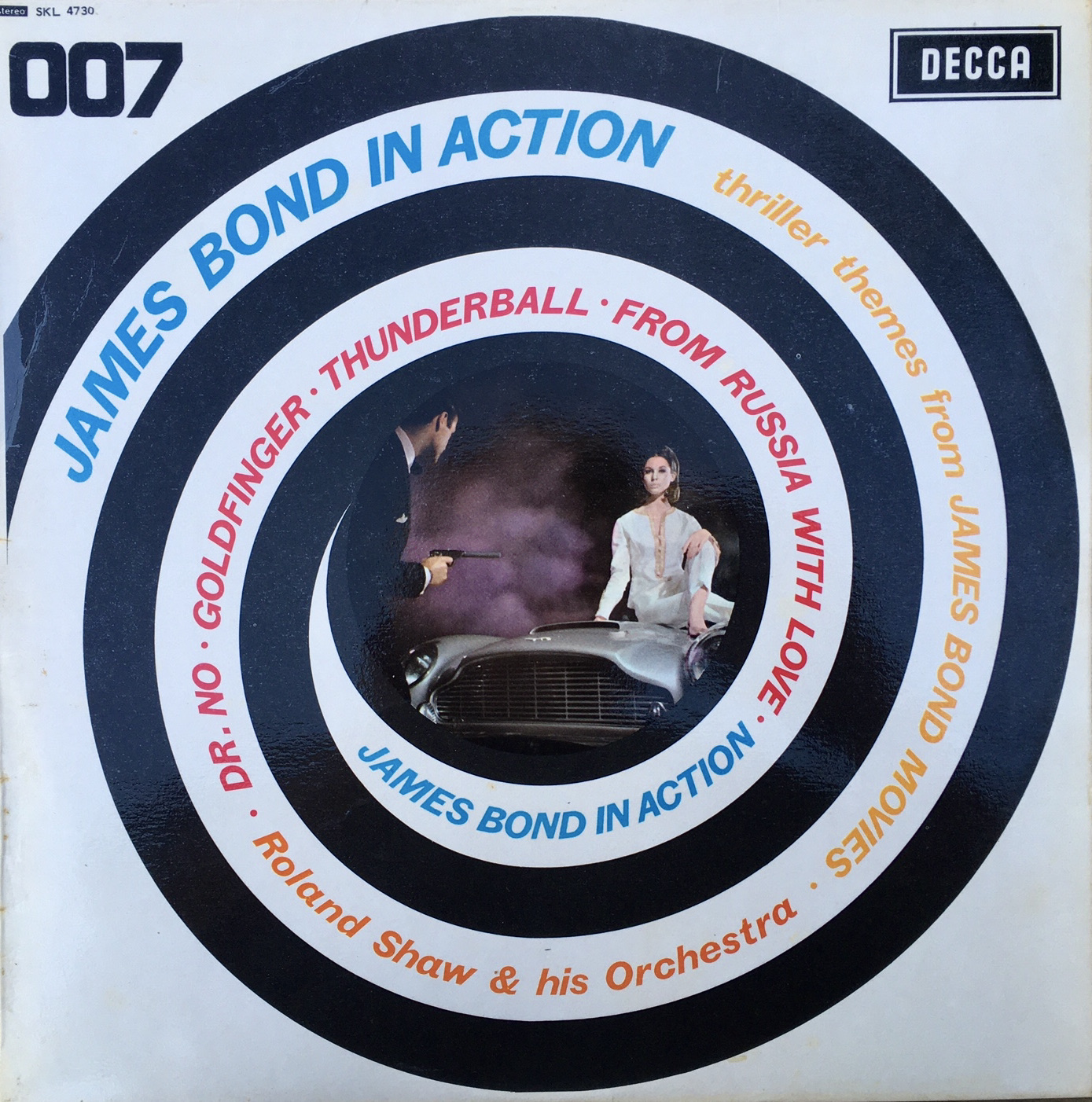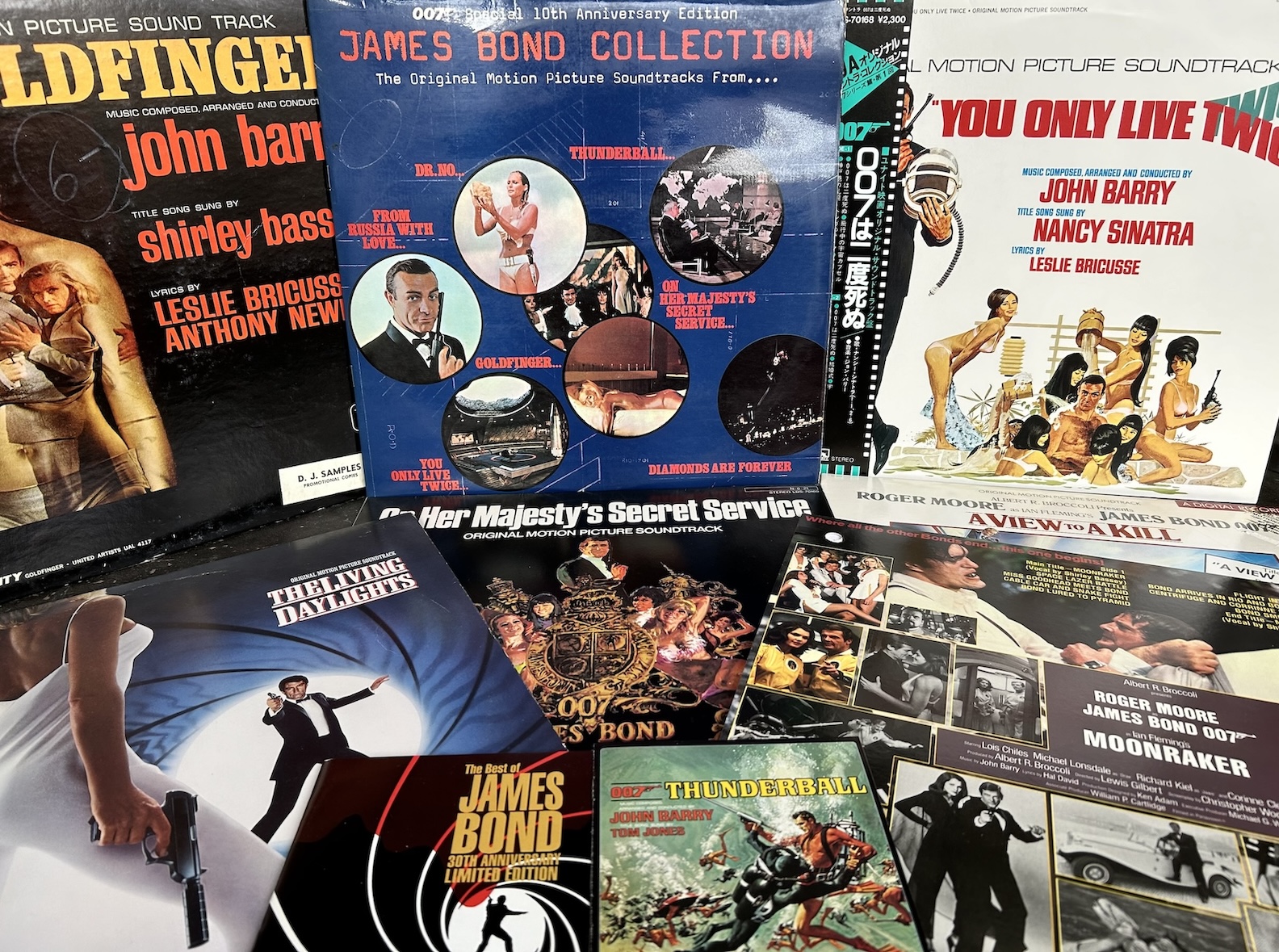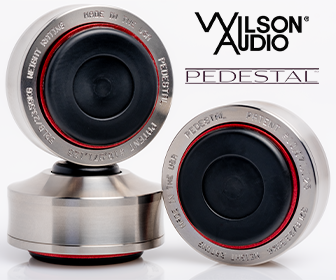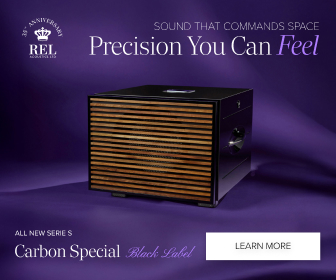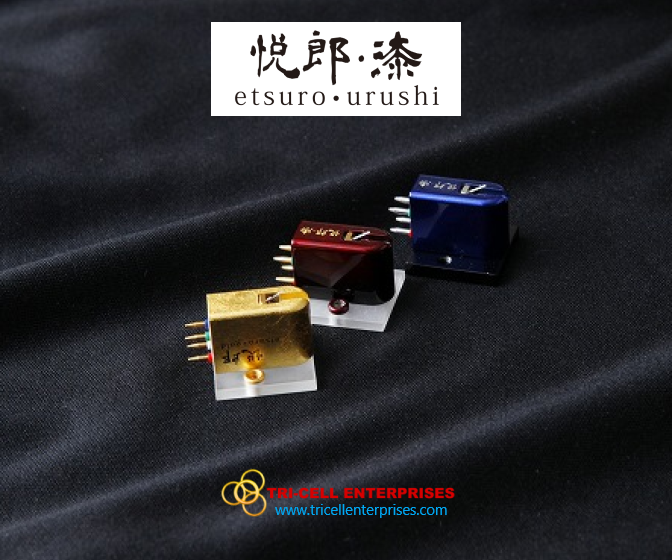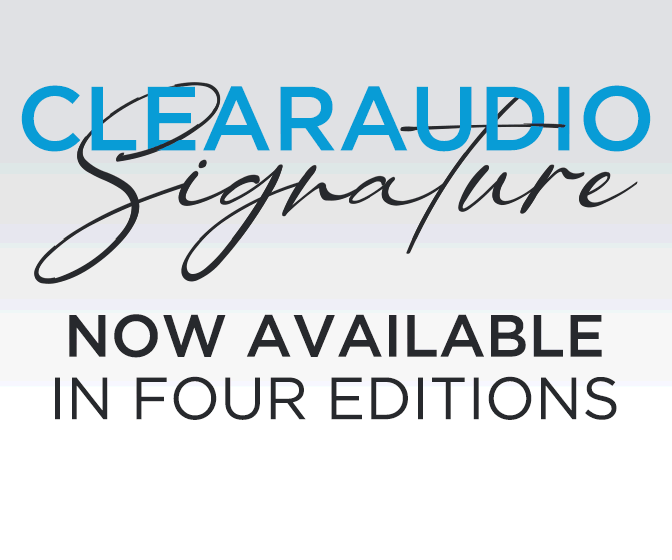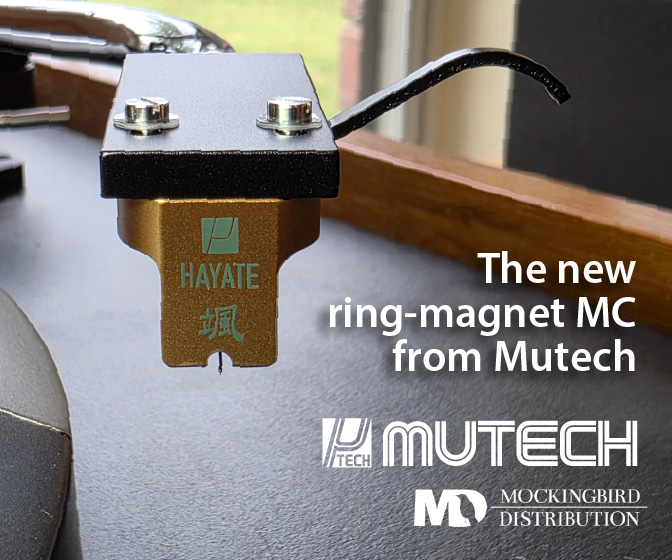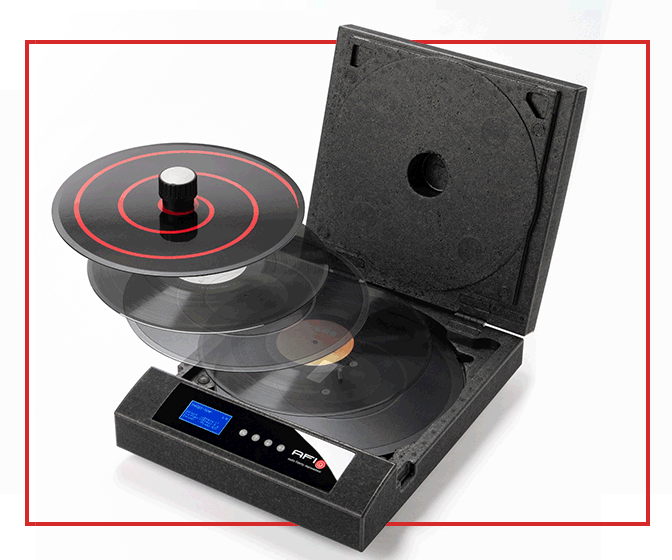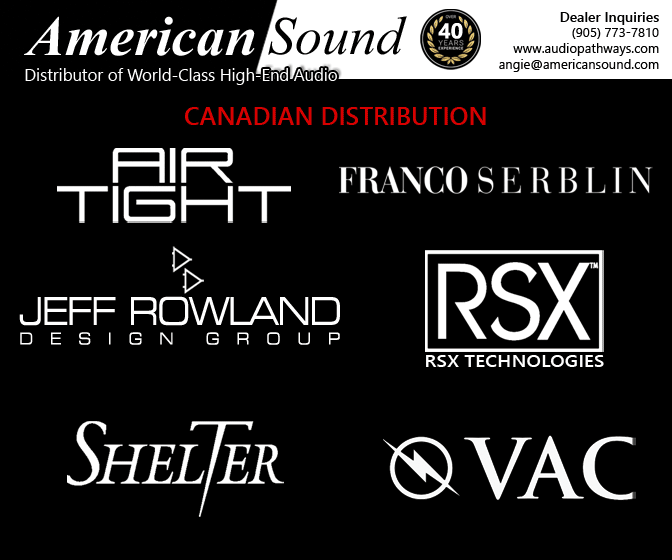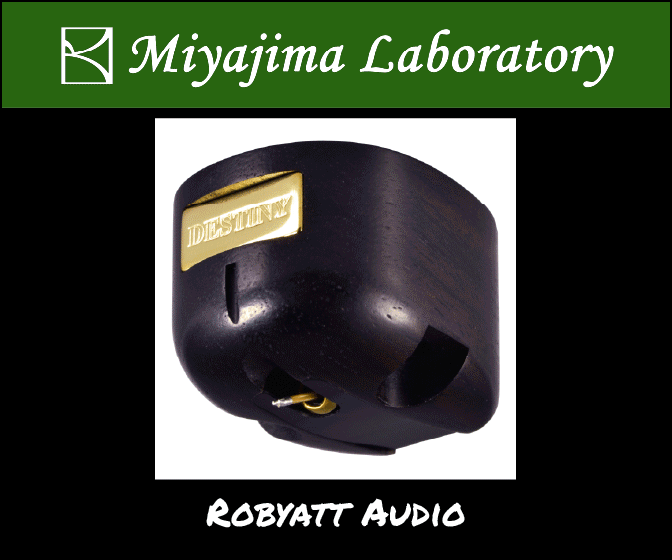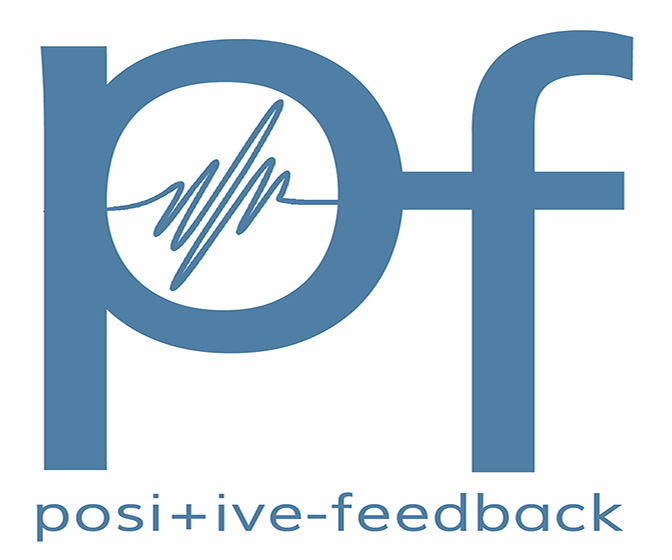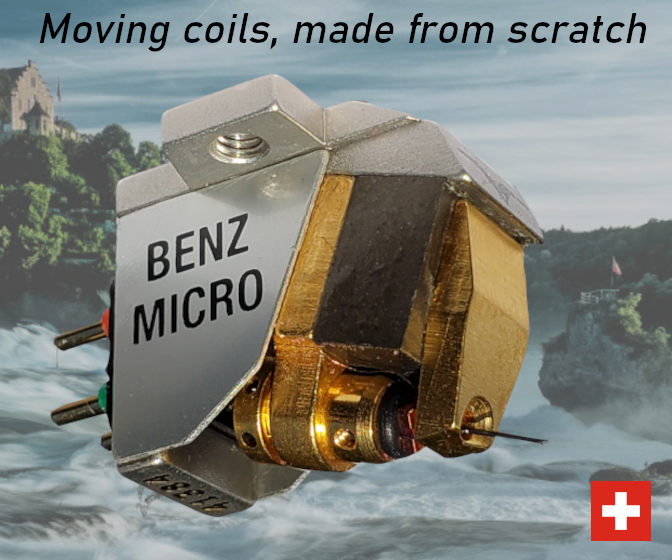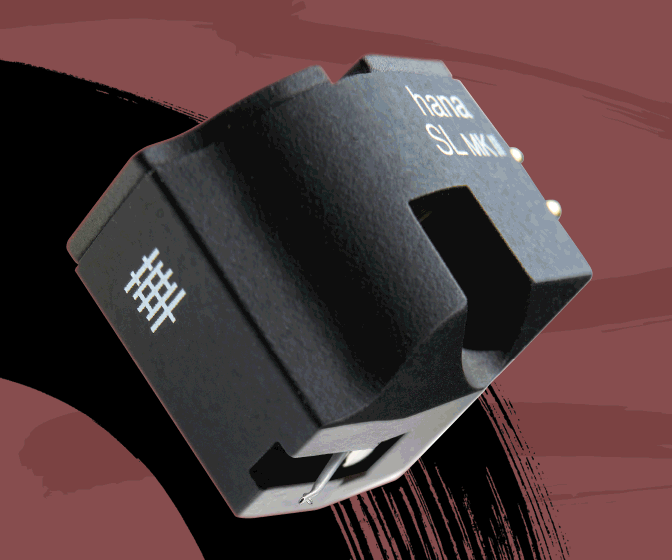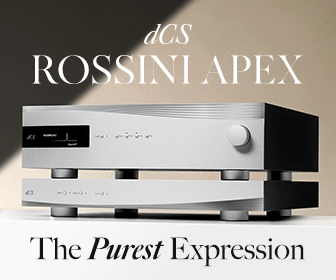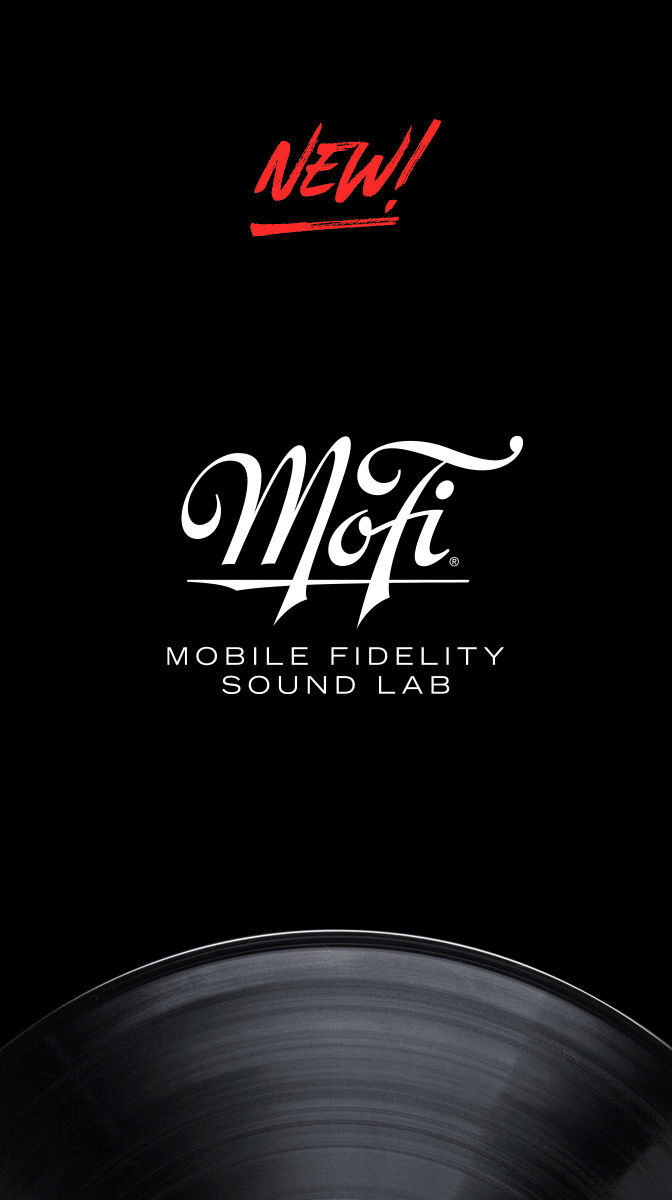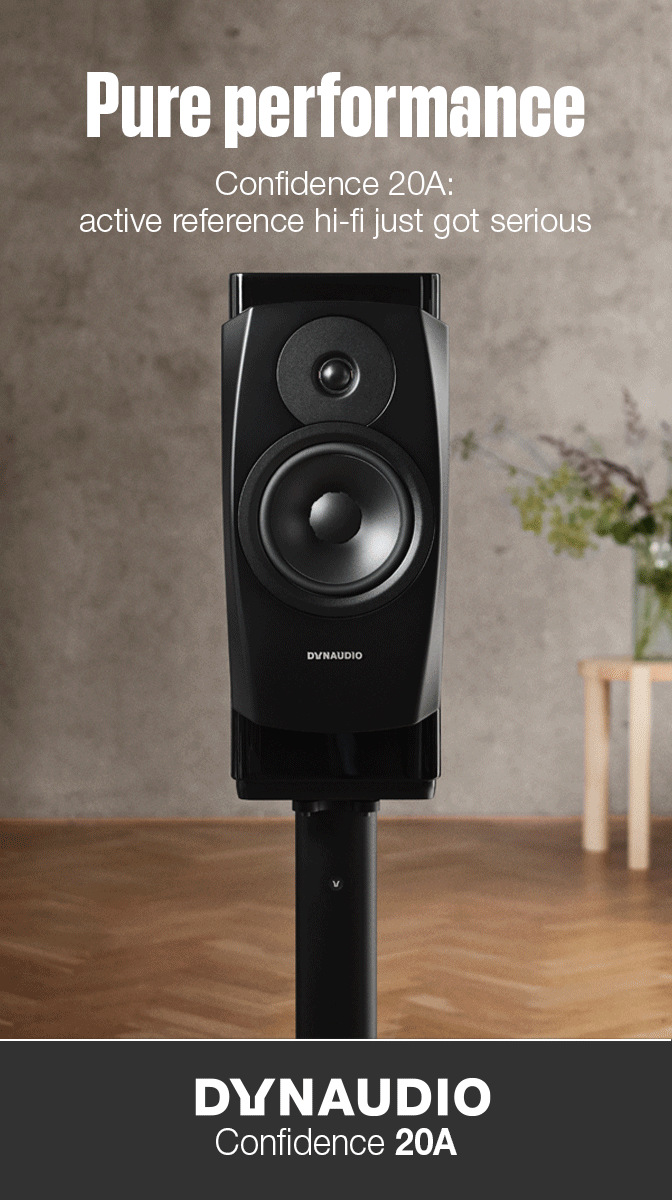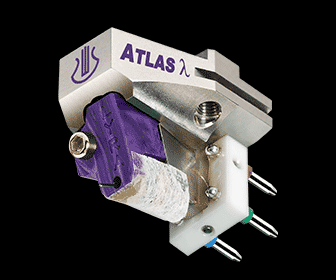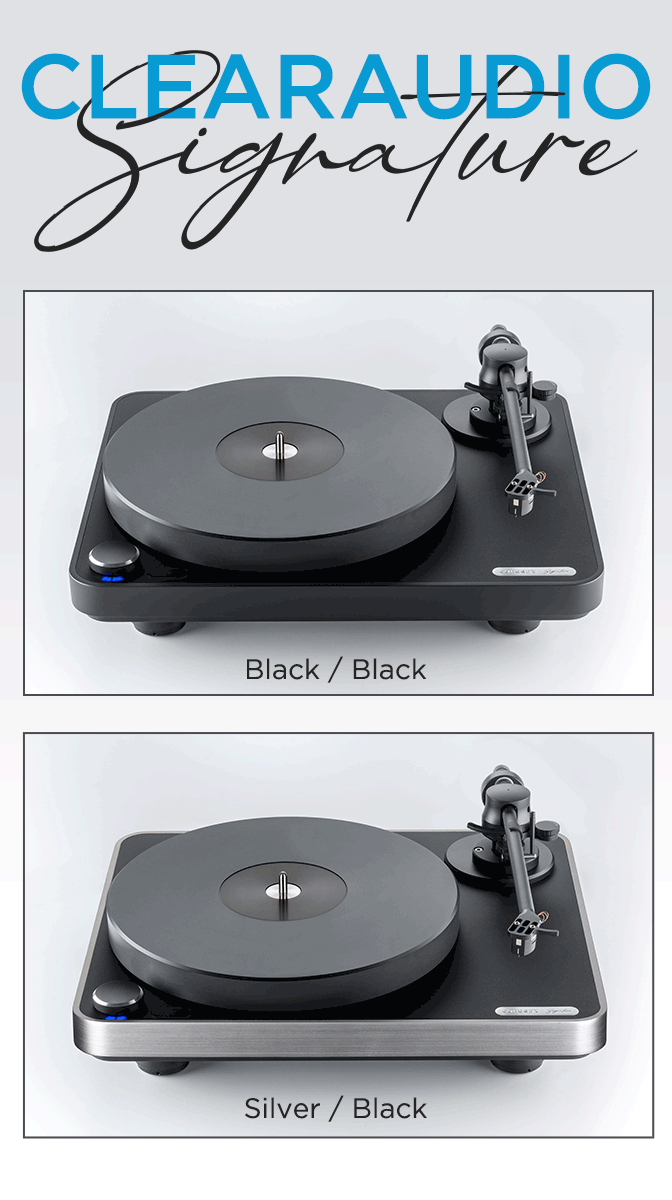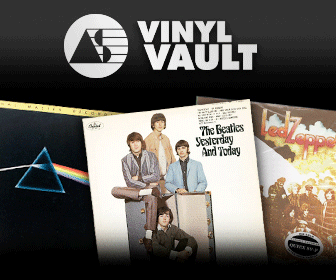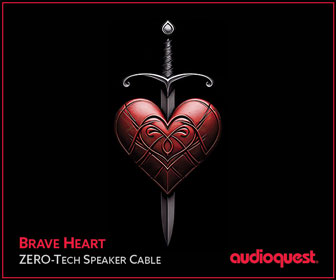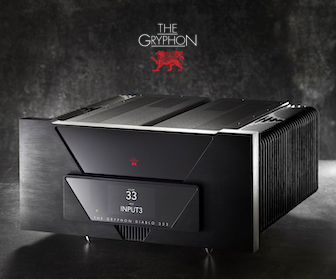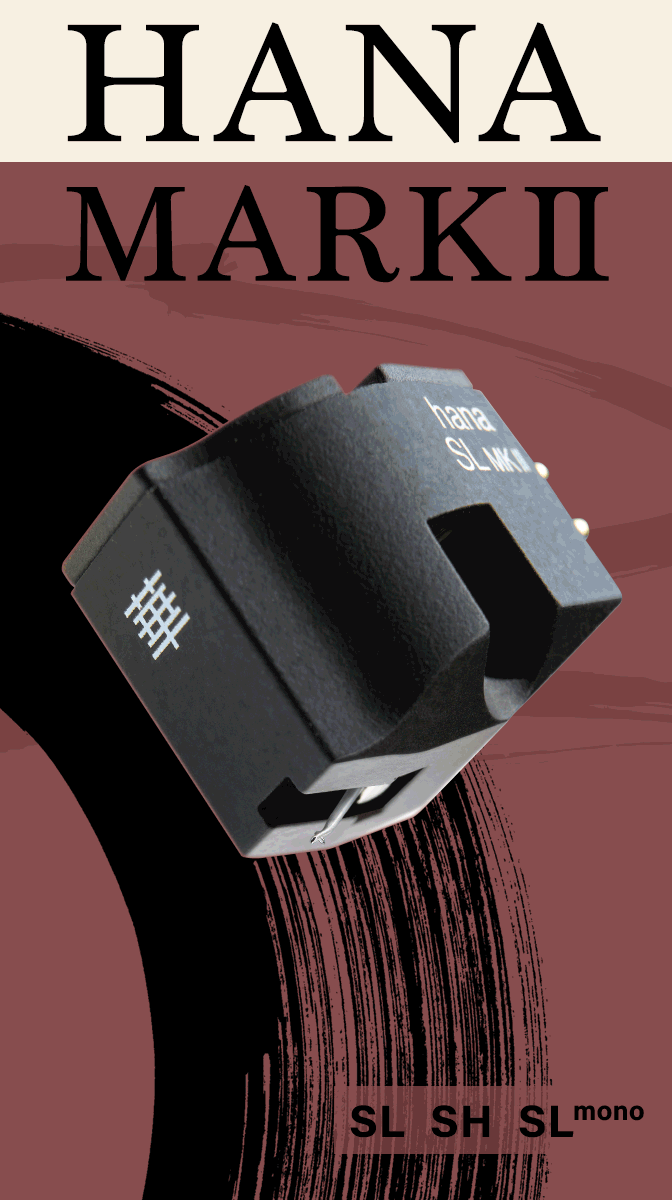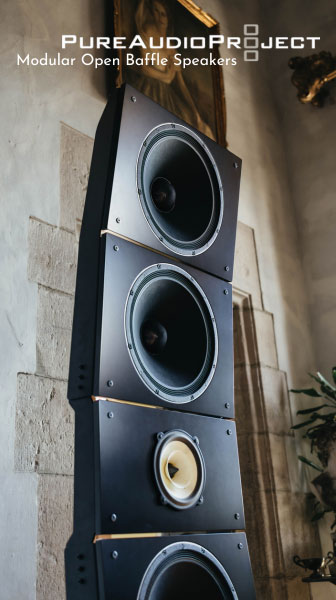007 for the Holidays: The John Barry - James Bond Soundtracks PART 2
“Do you expect me to talk?” -- “No, Mr. Bond. I expect you to groove…”
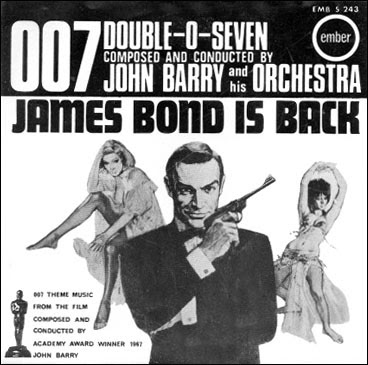
It is the next two Bond features that remain at the very top of my personal list of favorite Bond scores, along with Barry’s last entry in the series, The Living Daylights (1987).
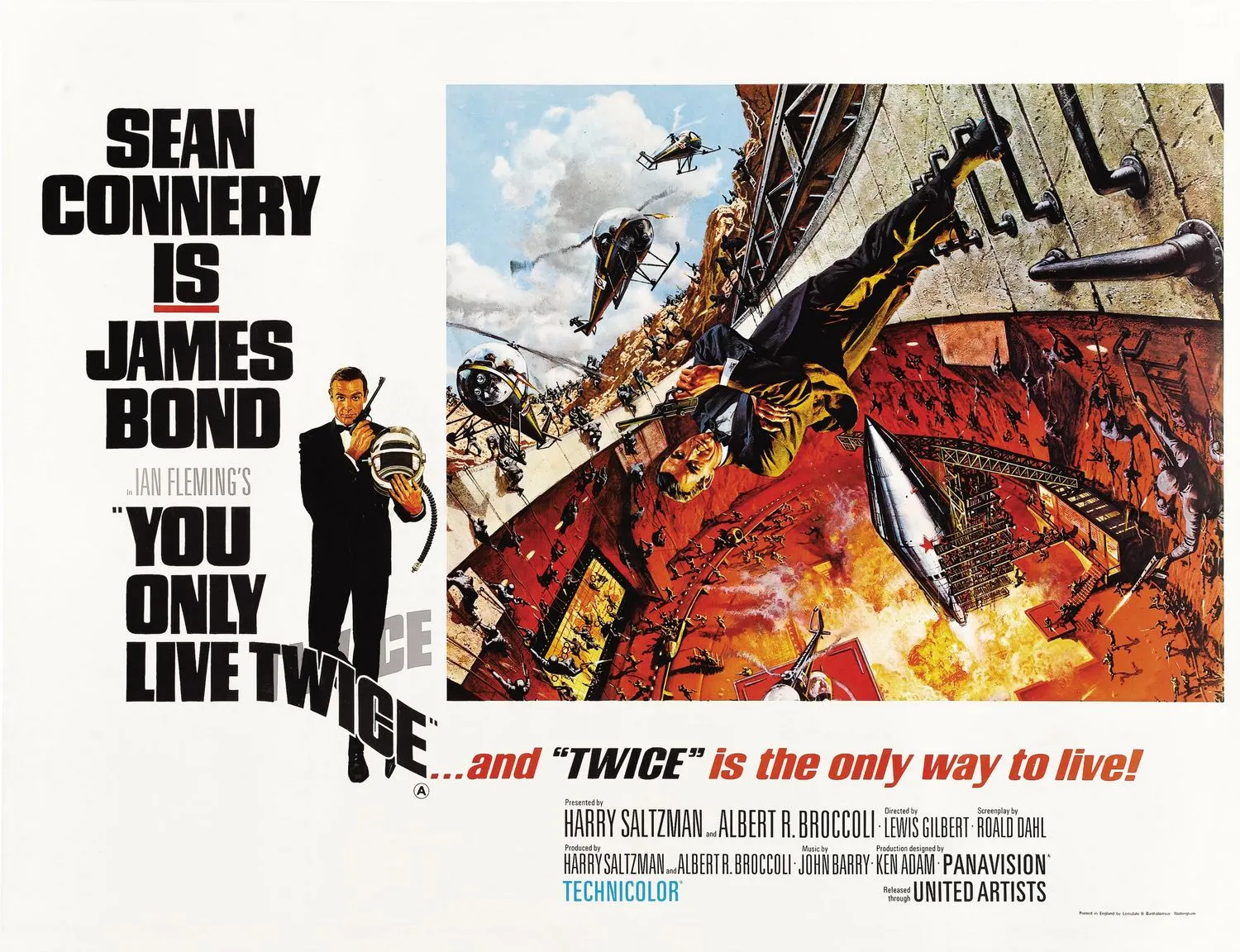
As was so often the case, a particular flavor or location for a Bond movie would inspire Barry to new flights of musical imagination, and this is especially true with You Only Live Twice (1967). The Japanese locations and culture (which at the time would have been relatively unfamiliar and highly exotic for Western viewers), the outer space sequences, the futuristic set designs of Ken Adam, plus the beautiful cinematography of Freddie Young (Oscar-winner for Lawrence of Arabia (1962), Doctor Zhivago (1965), Ryan’s Daughter (1970) - all directed by David Lean), inspire new qualities in Barry’s scoring. On a purely visual level this is one of the most distinctive Bond features in the canon, unmatched until Roger Deakins’s and Hoyt van Hoytema’s stunning cinematography for Skyfall (2012) and Spectre (2015), respectively.
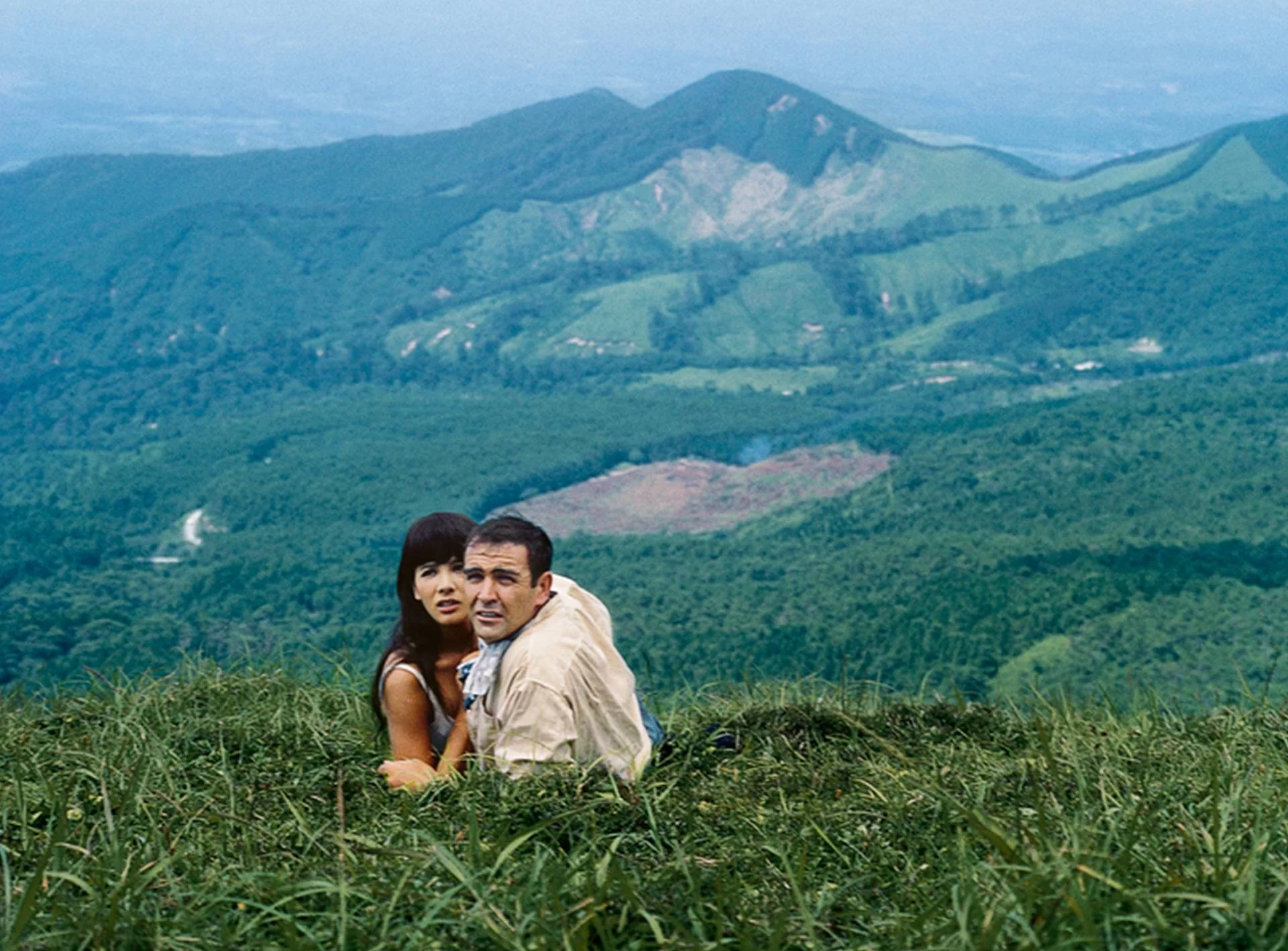 Kissy Suzuki (Mie Hama) and Bond (Sean Connery) on the slopes of Blofeld's secret volcano base
Kissy Suzuki (Mie Hama) and Bond (Sean Connery) on the slopes of Blofeld's secret volcano base
The film inspires Barry to new levels of lyricism in both the theme song, and the orchestral cues for “Mountains and Sunsets” and “The Wedding”. “Mountains and Sunsets”, a variation on the title song, is especially striking with glorious string arabesques interweaving in contrapuntal lines of startling harmonic richness, predictive of Barry’s late-career style.
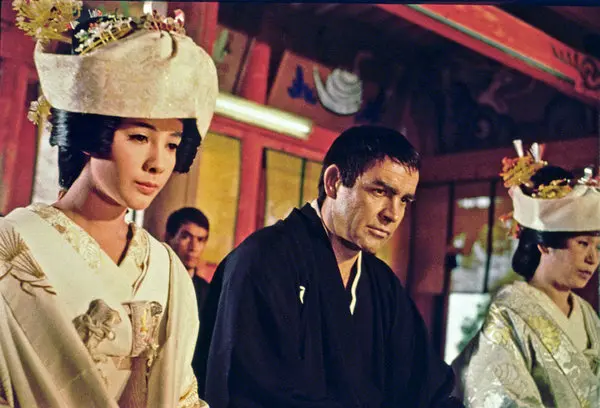 Kissy Suzuki (Mie Hama) and Bond getting married
Kissy Suzuki (Mie Hama) and Bond getting married
“The Wedding”, accompanying the scene where Bond - masquerading as a Japanese peasant (!!) - marries a beautiful local girl in a traditional Japanese wedding, features Barry’s nod to Japanese music through the addition of two featured soloists: John Leach played koto, the 13-stringed national instrument of Japan, and Hugo D’Alton played mandolin. The exotic timbres of both instruments are used sensitively throughout the score.
At the other end of the spectrum we have the dark, sinister, inexorable “Capsule in Space (Space March)” that accompanies the scenes where Blofeld and SPECTRE’s giant rocket swallows up American and Russian spacecrafts whole. It’s a gaunt, inexorable march, building up over repeated piano, percussion, harp and timpani figures accompanied by low flutes (a Barry favorite) and shimmering strings. As the menacing rocket approaches the capsule the brass and percussion increase in intensity, until its metal jaws open, swallowing the ship, killing the astronaut who is on a space walk. All musical hell lets loose, with cascading runs in the orchestra and a final repeated thud of brass finality. The fist of fate and doom.
It’s an iconic cue, and has found life beyond Bond as it has been sampled and reworked by numerous other artists. One of my favorite versions appears in the Propellerheads cover of “On Her Majesty’s Secret Service” (from later Bond composer David Arnold’s superb tribute album of Bond covers, “Shaken and Stirred”) - it dominates the middle section of the track (beginning at 4:50).
For the main title song Barry turned again to Leslie Bricusse for the lyric (he had penned the lyrics for Goldfinger’s iconic title song, along with Anthony Newley), and Nancy Sinatra, daughter of Frank, for the vocals. Nancy was a pop sensation in the wake of her albums with Lee Hazlewood, including the quintessential 60s hit, “These Boots are Made for Walking”.
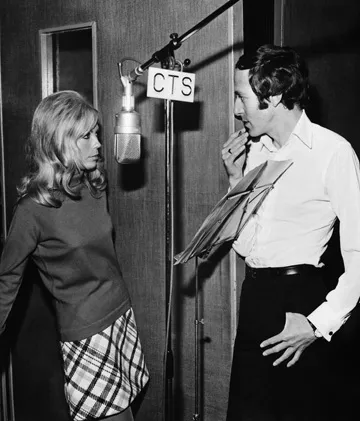 Nancy Sinatra with John Barry during the recording sessions for You Only Live Twice
Nancy Sinatra with John Barry during the recording sessions for You Only Live Twice
However, the sessions did not go well. Intimidated by the large orchestra, and feeling that her voice was not up to the task, Sinatra had to be coaxed through some thirty takes before Barry felt he had enough to cut together for the song. In the final version Sinatra’s pitch and steadiness occasionally waver, but it remains an incredibly appealing song and performance, where the vulnerability of the singer reinforces the melancholic nature of the song and its lyric.
Subsequently Sinatra re-recorded the song - double-tracked - with Hazlewood and the twanging guitar of Billy Strange, a member of the fabled Hollywood session group The Wrecking Crew. (Strange himself was the creator of a series of superior Bond cover albums). It’s a far more assured outing than the soundtrack version, albeit thoroughly Hollywood-ised. Initially released as a Mono single in 1967, it has appeared on various compilation albums in different versions since then. On the 2021 Nancy Sinatra double LP compilation “Start Walkin’” (part of the extensive Sinatra vinyl reissue program from Light in the Attic Records) you get the 1970 stereo version.
Elsewhere the You Only Live Twice soundtrack simply has one great music cue after another: it’s a quintessential artifact of 60s spy music.
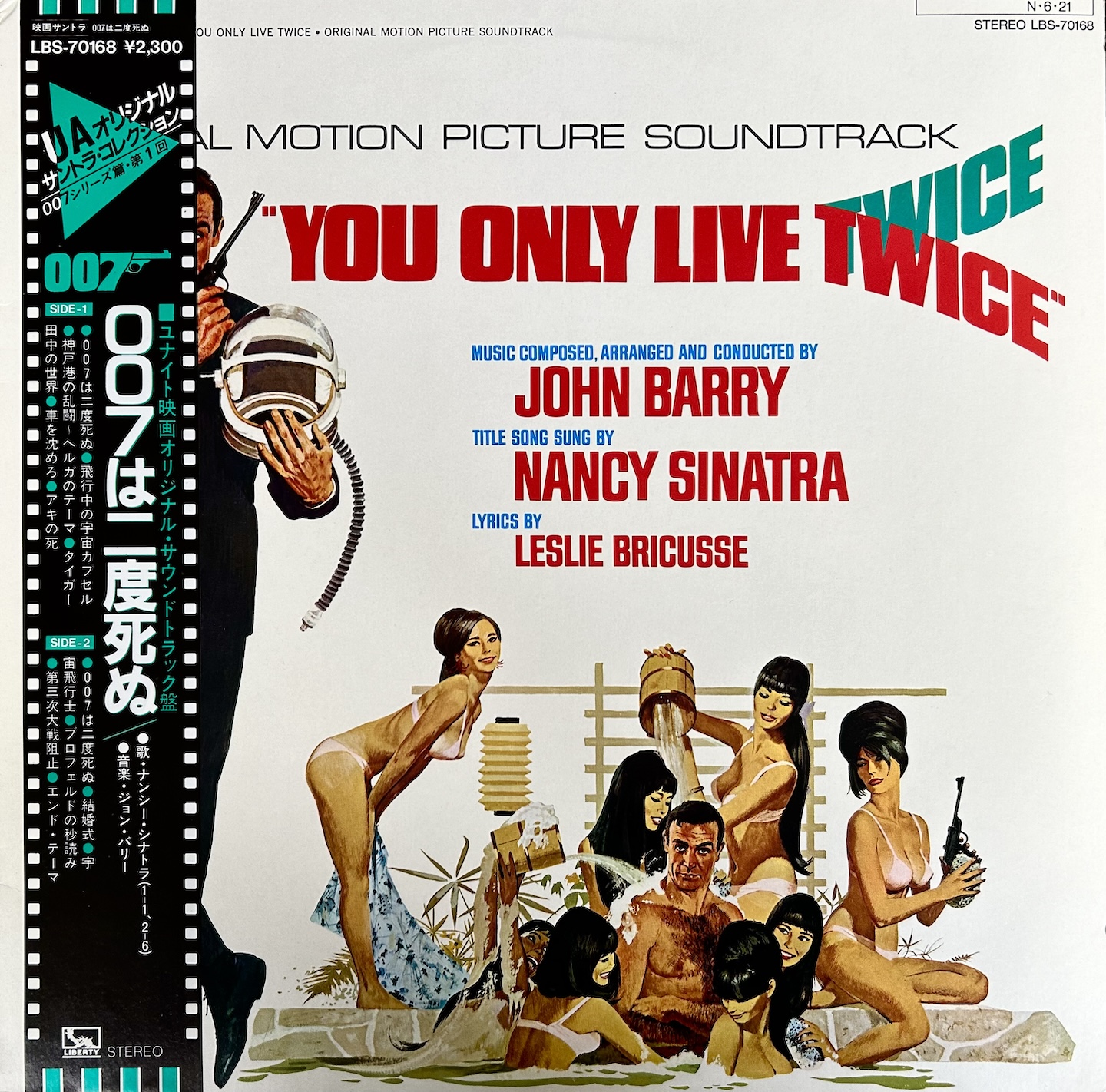
I own both an early US pressing and Japanese pressing of this album, and tend to favor the latter for its dead silent surfaces and superior pressing, let alone the gorgeous artwork and presentation, always a feature of Japanese releases.
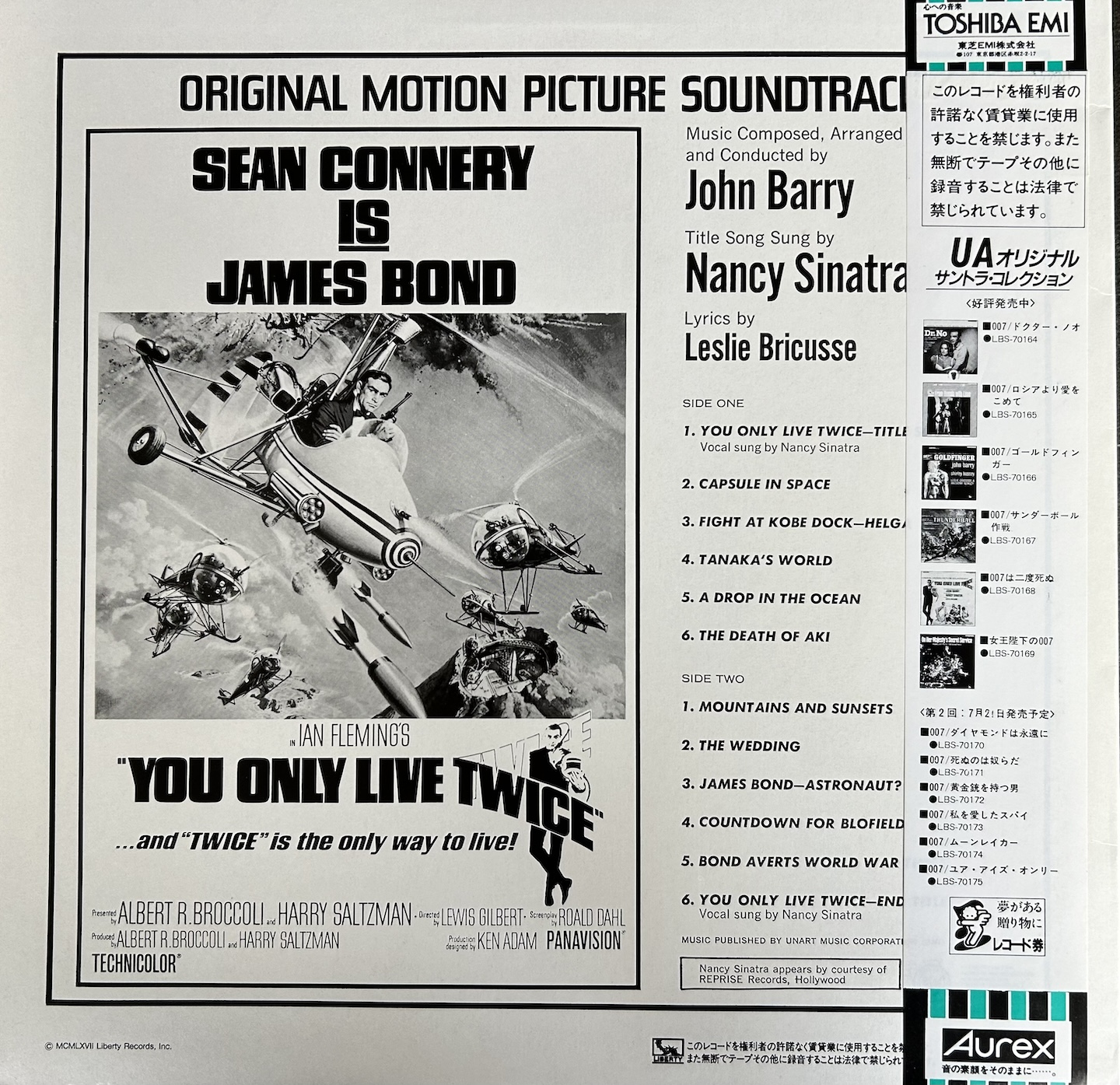
My other prized Japanese pressing of a Bond soundtrack is for the film that followed, On Her Majesty’s Secret Service (1969). For many hard-core Bond fans this is the Bond picture (at least of the vintage years, pre-Daniel Craig), despite the absence of Connery. I tend to agree, and this is my single favorite Barry score for the whole series.
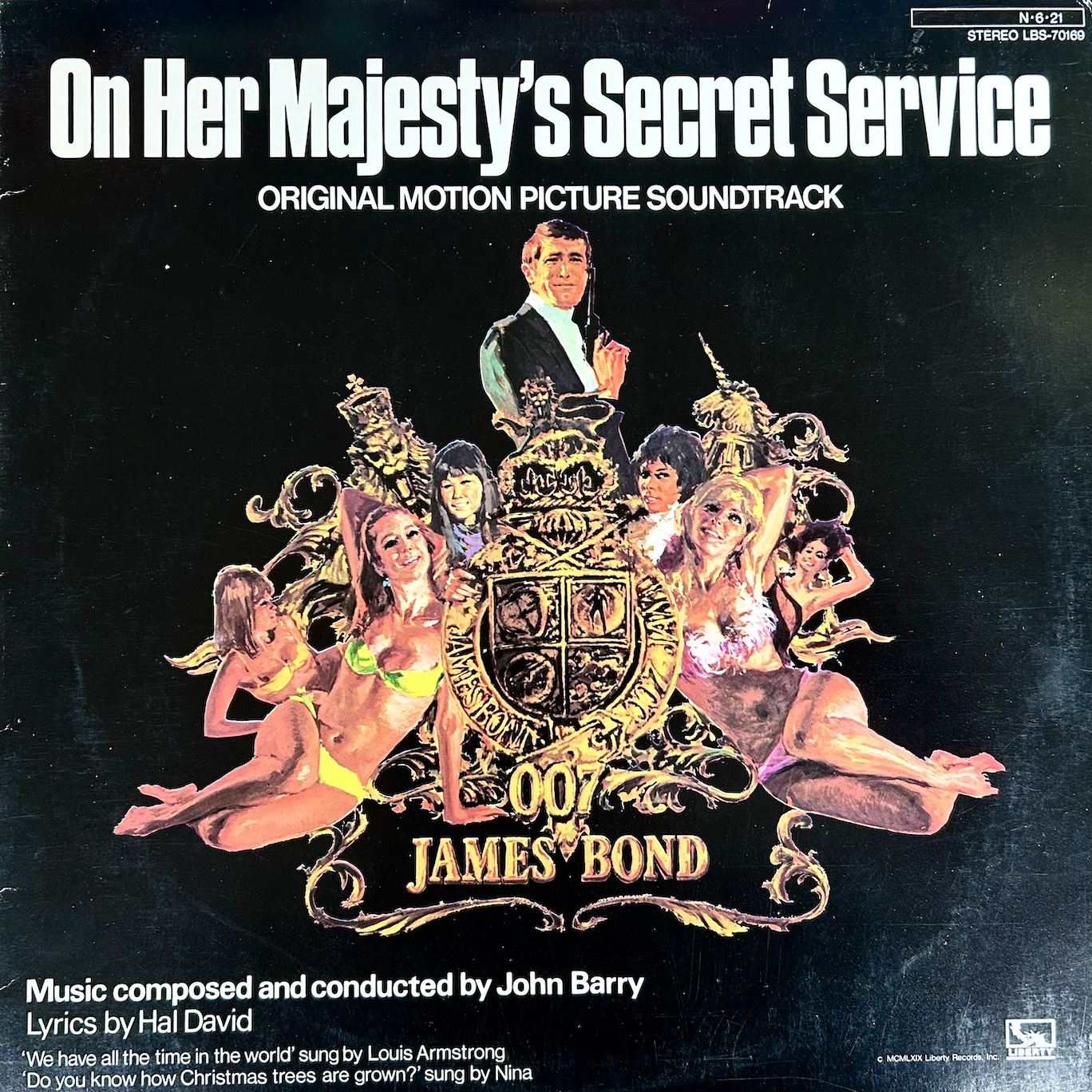
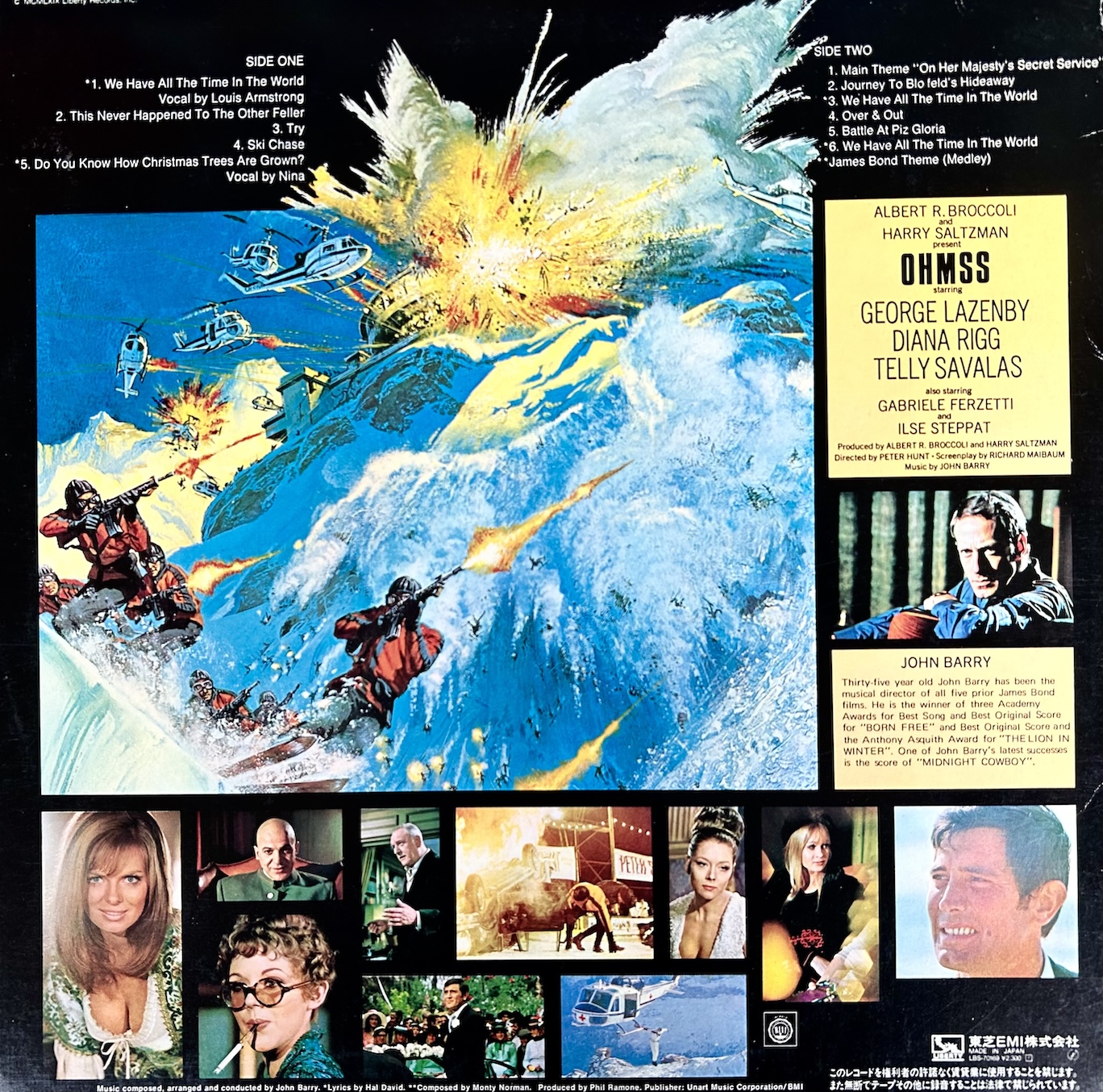
Why?
Barry feels completely energized by the film (despite his disappointment in Lazenby's performance compared to how he felt Connery would have been in the film), its gripping direction by the original editor on the series Peter Hunt, its credible and indeed emotional storyline: the heart-breaking, tragic romance between Bond and his future wife, played by accomplished stage actress (and Avenger) Diana Rigg. Add in spectacular chases and stunts, gorgeous Alpine locations, and you’ve got a winner that, from the get-go, gets Barry’s creative juices flowing.
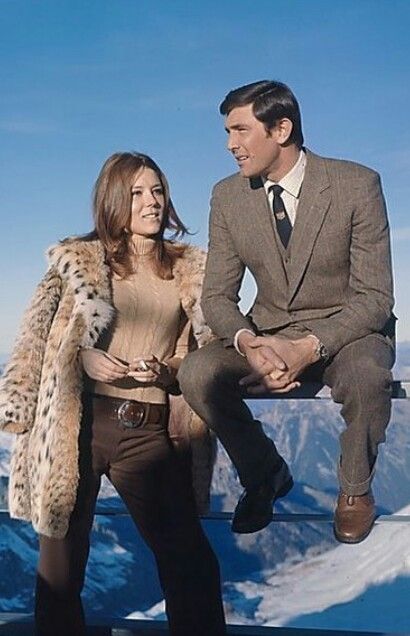 Diana Rigg with George Lazenby on location in Mürren
Diana Rigg with George Lazenby on location in Mürren
There was acknowledgment amongst the production team that compensating for Connery’s absence, “selling” a complete unknown, George Lazenby, in the title role was going to be a tall order. Barry saw the music as the essential element in helping to achieve this - and he set out to write the ultimate Bond score, in which all the Bondian musical elements were pushed to the extreme - to make the music “Bondian beyond Bondian” (as he himself described it to his biographer Geoff Leonard).
Eschewing the traditional Bond song for the Main Title, Barry crafts a thrilling orchestral march over a driving synthesizer line that more than hints at the powerful adventure to come. (The visuals feature callbacks to the previous films - the story of Bond on celluloid, as it were). Incorporating the synthesizer into the live recording was quite the technical feat for the time, and the composer was a pioneer in this respect. While synthesizers had been making guest appearances on pop albums throughout the 1960s, the album that really put the Moog up front and center, Walter (later Wendy) Carlos’s Switched on Bach, had only been released in October 1968. Barry insisted that the synthesizer parts - used throughout the score - be performed and recorded “live”, with no overdubbing as was customary when using these notoriously fiddly and unreliable instruments. Barry had taken the rare step of hiring a co-producer and engineer on the film, Phil Ramone (yes, the Phil Ramone who worked with everyone) with whom he had recently worked on Midnight Cowboy (1969).
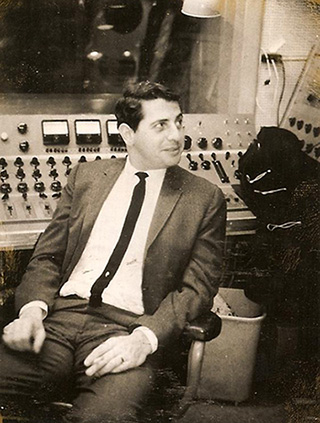 Phil Ramone
Phil Ramone
Jon Burlingame takes up the story:
Ramone, sensing that the synthesizer could potentially transform the music business, had already trained with Robert Moog and others who understood the technical complexities of the machine. But synthesizers in that era were not polyphonic - they could only play one note at a time… Ramone recalled: “I called Robert and said, ‘This is what I’ve got to do. How do I do it all live?’ Most people overdubbed everything. Robert gave me the clue: he said to get three keyboards and three sets of oscillators, which is how you make the sounds. It was hard to keep them in tune. You needed three keyboards so that you could actually have the full range of an 88-note keyboard.”
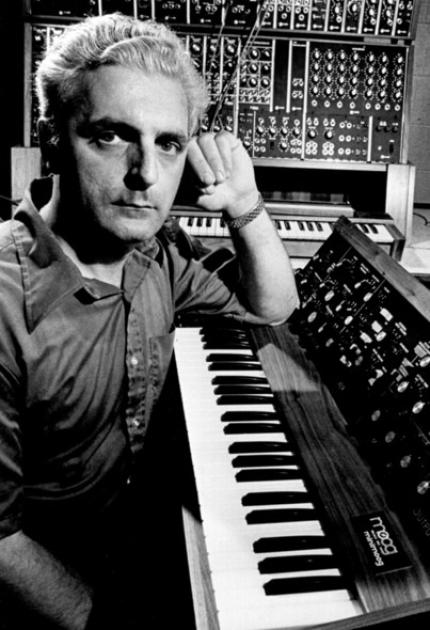 Robert Moog
Robert Moog
Barry brought Ramone to London and gave him three weeks - before recording was to begin - to experiment with the Moog, discover its sonic possibilities, and figure out how to program them so they could be played live with the orchestra. “I literally programmed all of the things that I felt would work, from the score as he was writing. I wrote down everything that I was trying, every sound that was different or unusual. John was as curious as I was.”
Editor John Glen [like Peter Hunt, a future director on the series] recalled being at the sessions: “John Barry was always keen to introduce new sounds in the music. He came up with this Moog synthesizer, which had this resonant bass that made the whole room tremble. It was quite unique at the time, very much a new toy. Later on it became generally used, but old John was the pioneer.”
Added Ramone: “Bond films always sounded incredible in the theater. I think that was due to John’s beautiful spread in writing, plus the engineers he had over there. [CTS Studios, Bayswater]. He loved the orchestra to be large and slow underneath a high speed chase. And, so typical of John, those soaring melodies.”
The Main Title music reappears during Bond's dramatic getaway from Blofeld's mountain lair atop Piz Gloria. I've skied these runs, and they're no joke. The resort of Mürren, where this was filmed, hosts a unique ski race every year, called "The Inferno" - for good reason. The fact that the cameramen are often ski-ing backwards, holding the camera, with sheer drops nearby, is mind-boggling. This is still one of the greatest Bond action sequences, beautifully staged and edited by Peter Hunt and his stunt team, including Willy Bogner - former Olympian. Barry's music is more than the icing on the cake.
Beyond its pioneering use of the Moog synthesizer, the score is notable for a somewhat different kind of “Bond song”, with a lyric by Hal David. Barry turned to the veteran Louis Armstrong to provide the vocal for this most poignant of songs, which in the film accompanies the courtship of Bond and Tracy (played by Diana Rigg). Armstrong’s health had been failing for some time, yet he delivered a performance that perfectly captures the bittersweet nature of the lyric and its melody (again given extra harmonic piquancy by Barry’s contrapuntal violin lines). Alas, Armstrong was not well enough to play the fluegelhorn solo, although the studio musician who fills in will almost convince you that he did play it.
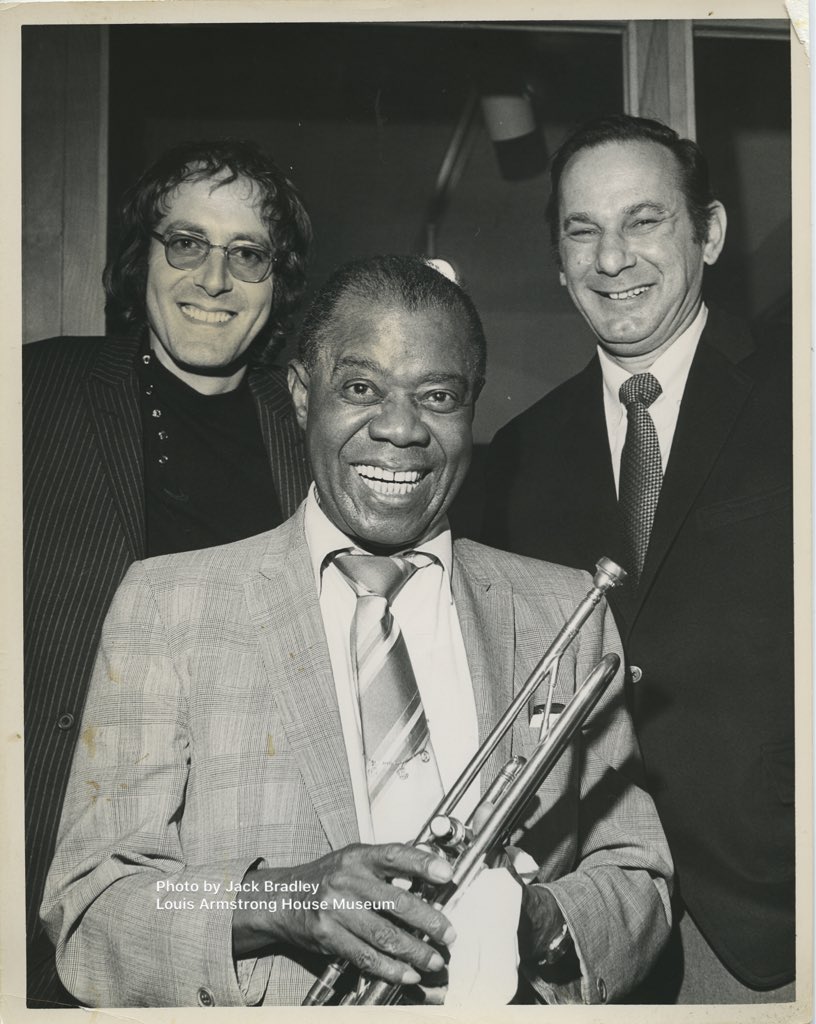 Louis Armstrong with John Barry and Hal David
Louis Armstrong with John Barry and Hal David
While the single failed to chart at the time, this song has subsequently entered Bond lore as one of the series’ finest. Together with Barry’s killer score (heard at its fullest on the 2003 expanded CD), it is quoted extensively by composer Hans Zimmer in the final Daniel Craig outing, No Time to Die (2021) - again to incredibly poignant effect.
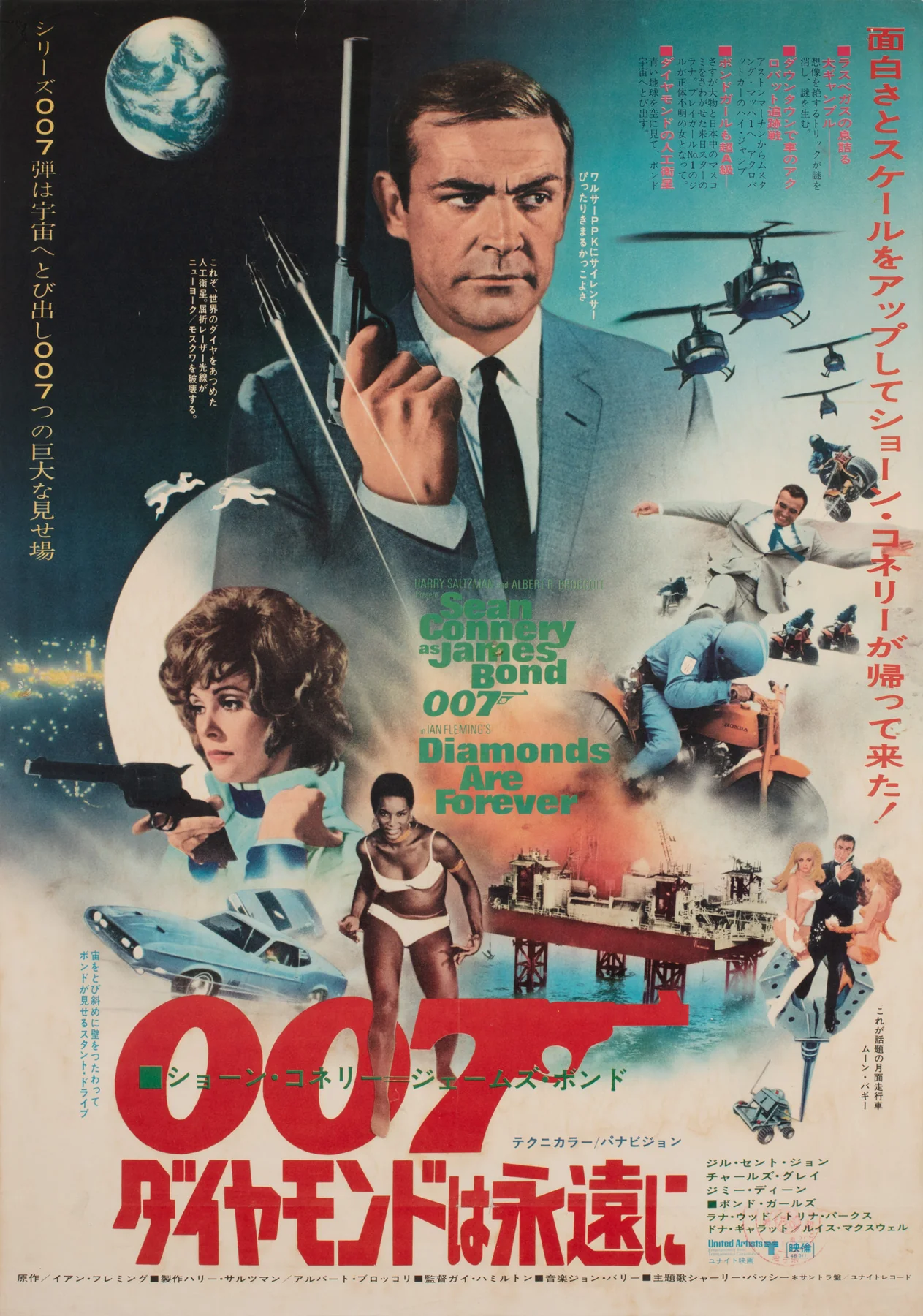 0riginal 1971 Japanese Poster
0riginal 1971 Japanese Poster
With the return of Sean Connery in Diamonds are Forever (1971), there was no need for Barry to write music that was “Bondian beyond Bondian”. Indeed the film’s lighter tone - courtesy of returning director Guy Hamilton - and American settings (dominated by Las Vegas) inspired Barry to go in a slightly different direction. The theme for the two gay contract killers is a deliciously campy yet also sinister piece in its own right, with an instantly catchy “fall-off” tail to the melody carried by flute and sax.
In the Moon Buggy chase through the desert where Bond eludes security guards in cars and on bikes in a proto-Apollo lunar module vehicle, Barry pens a dance-like theme for strings and xylophone that gives way to one of his typically forceful action cues.
The waltz-like theme for “Circus Circus” is such an apt match for the acrobats pirouetting above the gamblers that when I visited that casino ten years later on my epic US cross-country trip it seemed weird not to have that music playing in the background.
For the film’s outer space sequence, where Blofeld deploys his diamond and solar fueled laser beam, Barry channels the “Space March” from You Only Live Twice.
This track gets sampled most tellingly in Dan Grigson’s “Grantby” (Timber) which I discovered on this excellent compilation - a 1995 spin on classic spy and detective music.
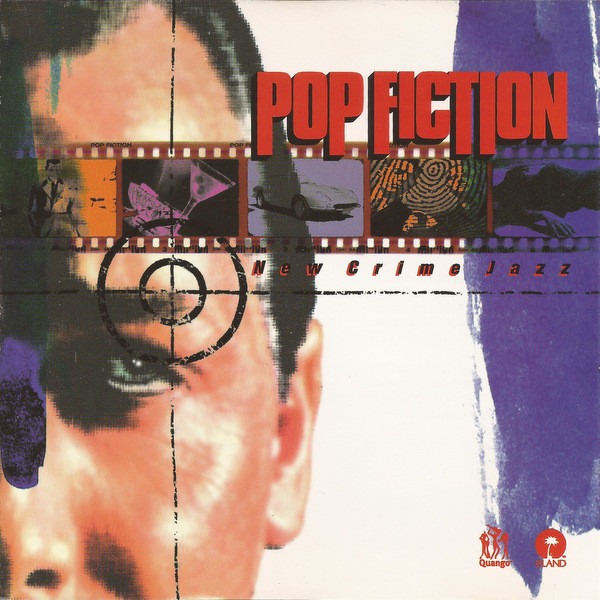
Of course the highlight of the score is the return of Shirley Bassey for the title song. Barry turned again to Don Black for the lyric, and he surpassed himself with his delicious double-entendres - “hold one up and then caress it / touch it, stroke it and undress it.” As Jon Burlingame notes in his book:
“Write it as though she’s thinking about a penis,” had been Barry’s advice to Black.
Hearing the song for the first time, Harry Saltzman again demonstrated his unfailing instincts for making bad choices when it came to Bond songs and music by declaring: “I don’t like it, it’s just not right. The lyric, it’s dirty.” Barry responded: “What would you know about it?” - and Saltzman stormed out of the room. Fortunately, Broccoli overruled his partner. [Burlingame, p.96]
The song, with its glittering orchestration that is musical light bouncing off the jewel’s facets, captures the eternal fascination with diamonds (and sex) to perfection, combining both wit and obsession in equal measure. And Bassey’s rendition is perfect, less strident than Goldfinger, but no less ardent, and deliciously sensual. It’s my favorite of her Bond songs.
(Song begins at 4:38 - but watch it all for Barry's brilliant underscoring, ramping up the tension during Bond's hunt for Blofeld).
The next film in the series, Live and Let Die (1973) was scored by George Martin, with a title song by Paul and Linda McCartney & Wings. I refer you to my review of the LaLaLand Records Expanded Edition.
I will be reviewing the upcoming LaLaLand releases of the next two Barry scores - The Man with the Golden Gun (1974) and Moonraker (1979) - in the next month or so. Stay tuned for those detailed breakdowns of those scores - coming soon!
In between, Marvin Hamlisch - who had risen to fame with his musical A Chorus Line - penned the score for The Spy who Loved Me (1979).
For Your Eyes Only (1981) was scored by Bill Conti of Rocky fame. The non-Barry scores for Bond will be covered in a later article.
Octopussy (1983), which marked the return of Barry to the series, I likewise reviewed in the LaLaLand Records Expanded Edition.
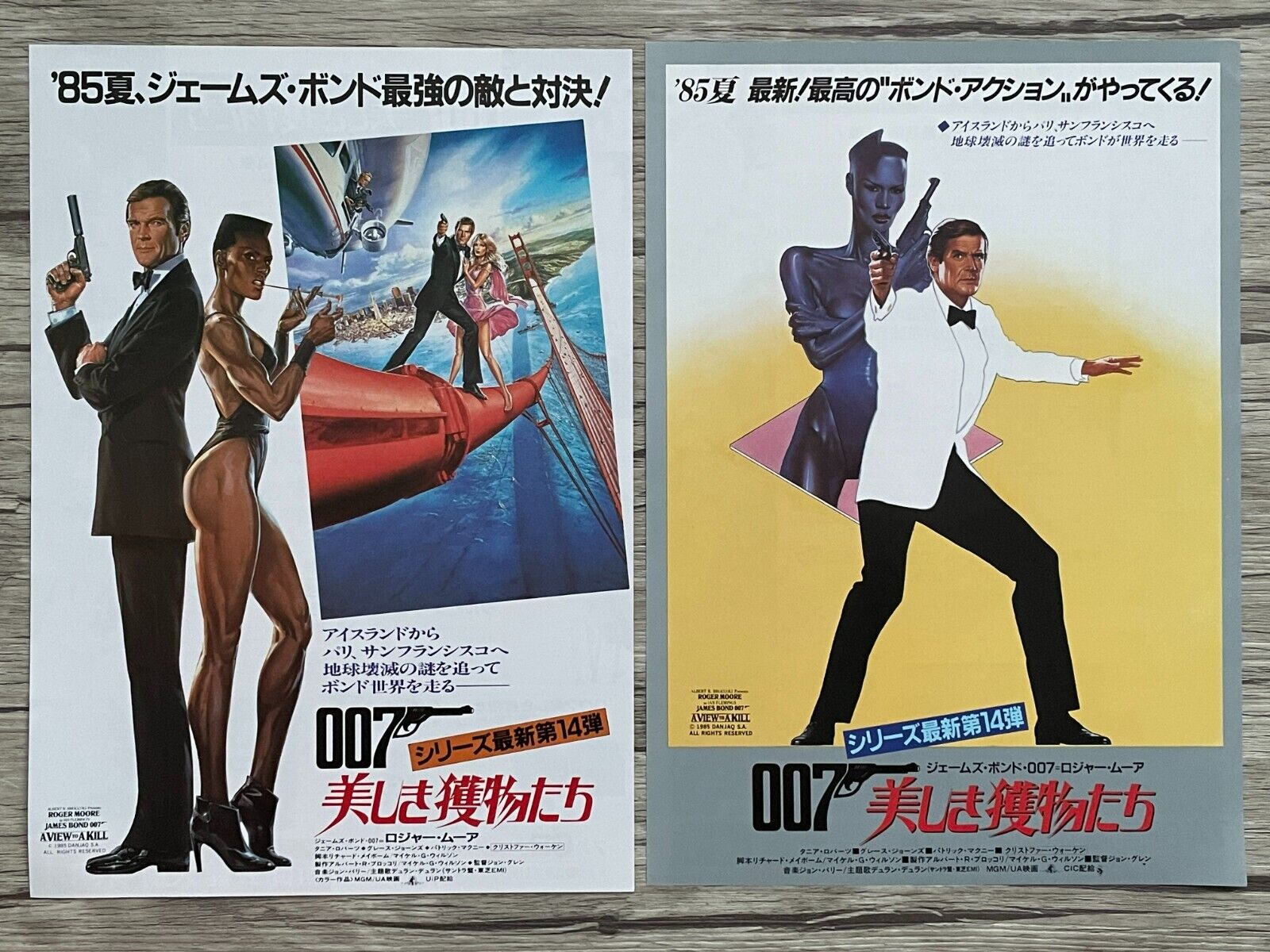 1985 Japanese Posters
1985 Japanese Posters
This leaves two remaining John Barry scores, for A View to a Kill (1985) and The Living Daylights (1987). The former was to be Roger Moore’s last outing in the part, and I must confess to having no great love for this entry in the series, despite the presence of Patrick MacNee (Steed in The Avengers) as Bond’s partner-in-espionage, and very spirited turns by Christopher Walken as the villain, and Grace Jones as his formidable henchwoman. Musically the film is most notable for the excellent theme song by Duran Duran, a collaboration which both band and composer thoroughly enjoyed. Check out this quintessentially 80s music video (oh that hair!!):
No, I’m going to focus instead on Barry’s final Bond assignment, which was Timothy Dalton’s first essaying of the role, in The Living Daylights.
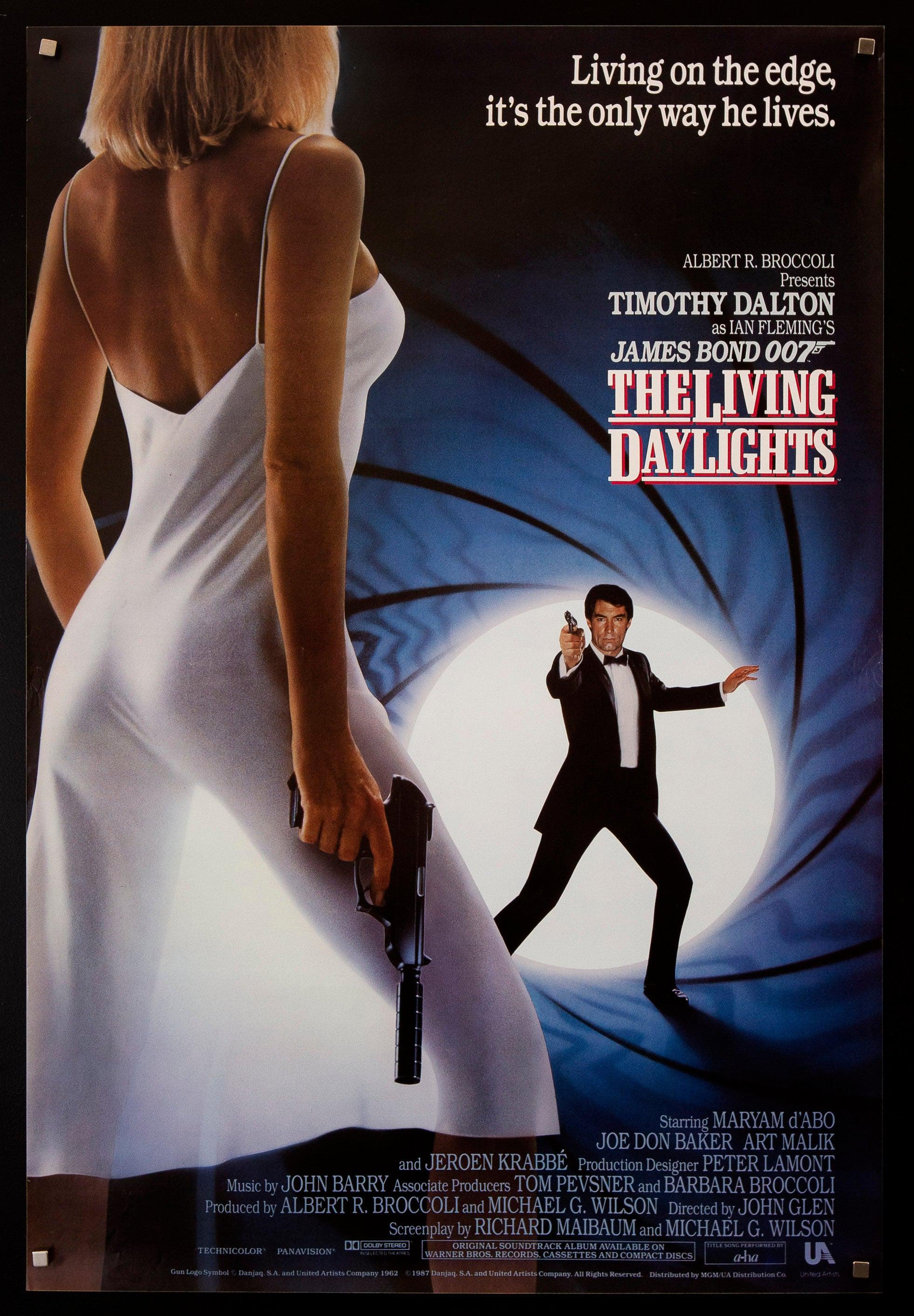
Dalton’s energy, his “back-to-basics” Bond - maybe the closest to Fleming’s literary creation until Daniel Craig - inspired a film that, even though it had been conceived and written largely with Moore in mind, emerges as if newly minted and certainly reinvigorated. The same goes for Barry’s music which - adopting new drum machine technology - sounds similarly energized. This was despite the fact that it was not a happy working experience for Barry, which precipitated his decision to make this his last Bond film. The title song by the Norwegian synth-pop band a-ha is highly effective, with Barry adding tell-tale 007 brass and string flourishes, and did well in the singles charts, but it was not a happy collaboration for Barry, unlike the one with Duran Duran.
Where Barry felt energized was in his collaboration with Chrissie Hynde of The Pretenders for two songs. Initially there was to be only one, the end title song “If there was a Man” - a romantic number which channeled some of the poignant spirit of “We have all the time in the World” from OHMSS. But this went so well that they created a second song that adds something really special to the mix.
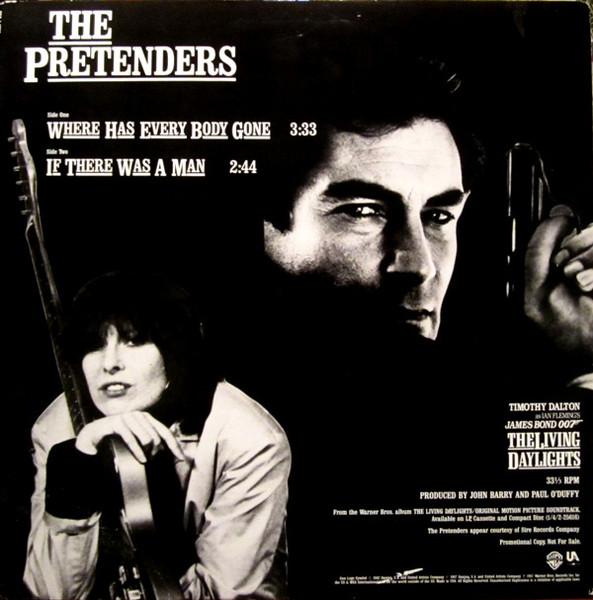
“Where Has Everybody Gone” - heard only briefly in the film as the song being listened to by the Russian hit-man Necros (played by the 6ft 4 1/2 inch former dancer Andreas Wisniewski) attacking MI-6’s safe house - is actually one of the best Bond songs most people don’t know. It is fantastic, a real rocker, thoroughly in the Bond idiom (complete with tell-tale wah-wah brass), and fortunately gets a track to itself on the soundtrack album (and was released as a B-side on the Chrissie Hynde 12” single of both songs - a record my daughter used to love hearing at full blast!)
Barry was so taken with these songs that they are used throughout the score, far more often than the a-ha main title theme. Instrumental versions of “Where has Everybody Gone” dominate major action sequences, and this is where Barry’s use of a new drum machine comes to the fore, giving the music real bite.
Barry (talking to Geoff Leonard):
“I wanted to put in these tracks and they really cut through. We’ve used them on about eight pieces and when we got them mixed in with the orchestra it sounded really terrific, with a lot of energy and impact - a slight freshness and a more up-to-date sound.”
Collaborating with engineer Paul Stavely O’Duffy (who also got a co-producing credit as a result), Barry created an unmistakeably 80s sound, but somehow it doesn’t date the music negatively. You’ve still got those characteristically wailing Bondian brass figures over that inexorable drum beat, with attendant driving bass line, and it all is the perfect musical accompaniment for the relentless Necros, and the various action scenes. As was so often the case, Barry broke new ground by using this emerging technology on a film score. On my US vinyl pressing this music is vigorous and in your face in a manner that had been somewhat absent from Barry's Bond for a while - it demands to be cranked up to full volume!
Am expanded version of the score was released by Rykodisc in 1998, then ported over to Capitol for its 2003 series of soundtrack re-releases. Either version is worth acquiring for the extra music (very much hoping this will get the LaLaLand treatment in the near future).
Sessions took place at the usual CTS Studios, now located in Wembley. As Barry stated to Geoff Leonard:
“I’ve always liked the studio, ever since we used to record at the old CTS in Bayswater when John Richards was the engineer. I like working with engineers I know and can trust, so I came to the new studios with John. Dick Lewzey, who has since taken over, is also an excellent engineer. Studio One provides a lovely big movie sound. When this goes onto the large screen, it really fills the theatre. It’s a good healthy sound and with this size orchestra (nearly seventy), it sounds wonderful and it transfers well to film. Even when you play it down, there is such a lot of low end to it. This score is going to sound very rich.”
As with A View to a Kill, The Living Daylights was recorded all-digital, in this case with a 24-track machine. Barry (to the dismay of some Tracking Angle readers), was all in on digital from the get-go. His score for Disney’s The Black Hole (1979) was the first digitally recorded soundtrack. “I love it - it’s just that much better than analogue, everything major I’ve done since has been digital.”
Barry’s farewell to the Bond films had an onscreen component too. The director of The Living Daylights, John Glen, recalls: “I think he must have known this would be his farewell, because he asked me if he could make an appearance in the film. I was happy to oblige, so I arranged for him to play the conductor of the orchestra in Kara’s closing concert (performing Tchaikovsky’s Variations on a Rococo Theme). He was eminently qualified for the job…”
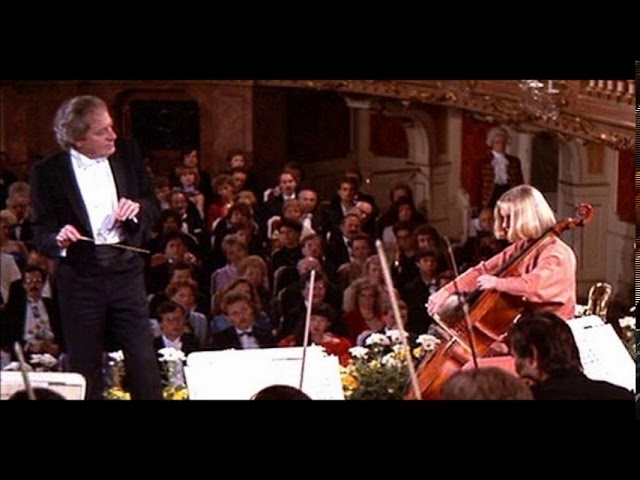 Barry with Kara (Maryam d'Abo)
Barry with Kara (Maryam d'Abo)
COMPILATIONS and COVERS
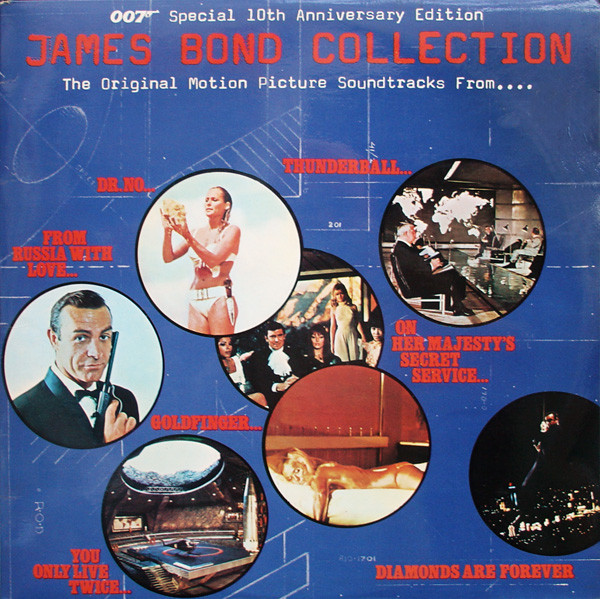
Between Diamonds are Forever and the release of Live and Let Die with a new Bond - Roger Moore - United Artists celebrated 10 years of the franchise with a double LP set titled “The James Bond Collection”. I believe this was my first John Barry Bond record purchase, at the age of 12, and I still have and play it. It came in a very cool gatefold with extra pages done in an MI-6 dossier style, featuring photos from the films and from behind the scenes.
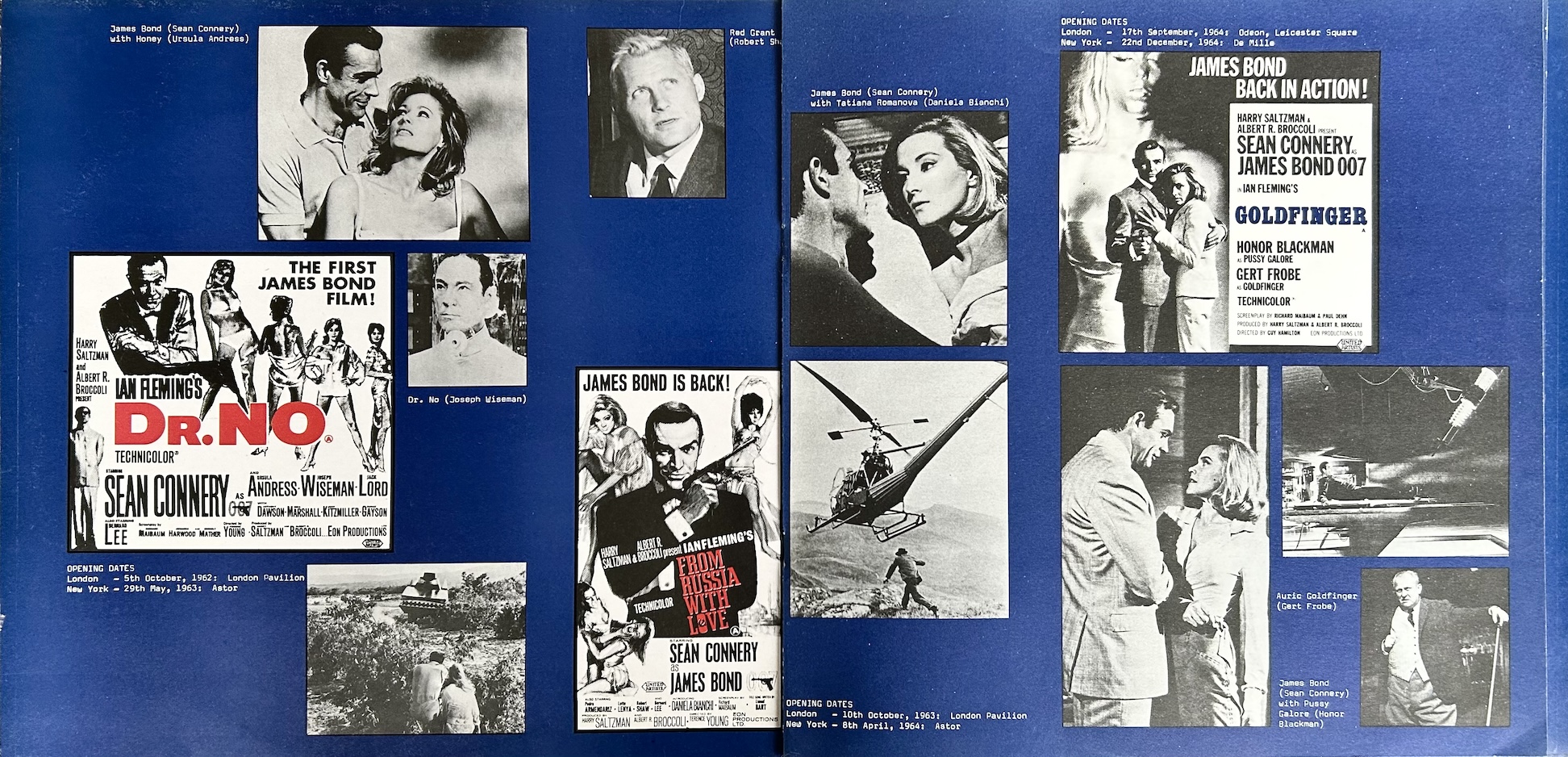
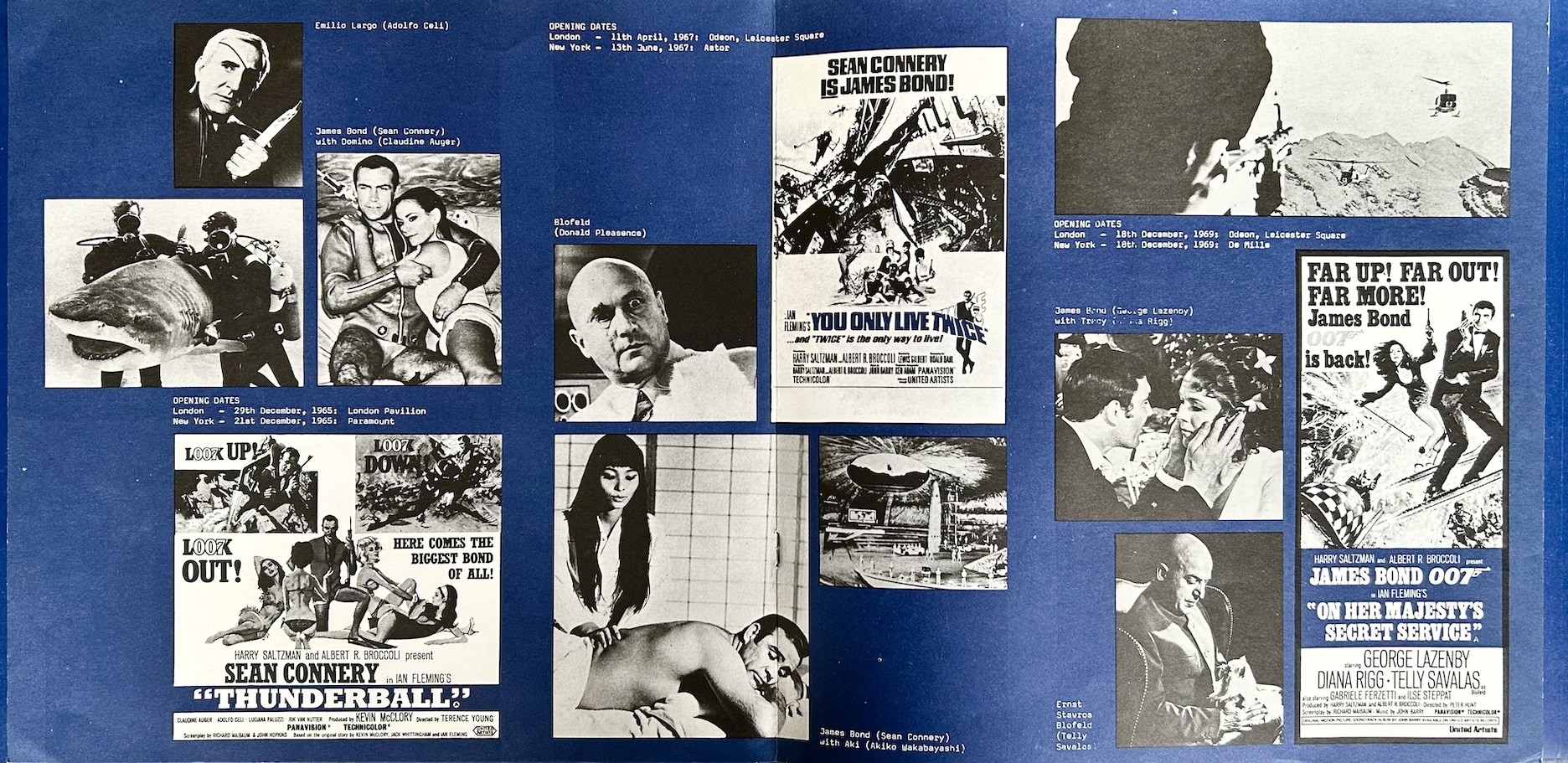
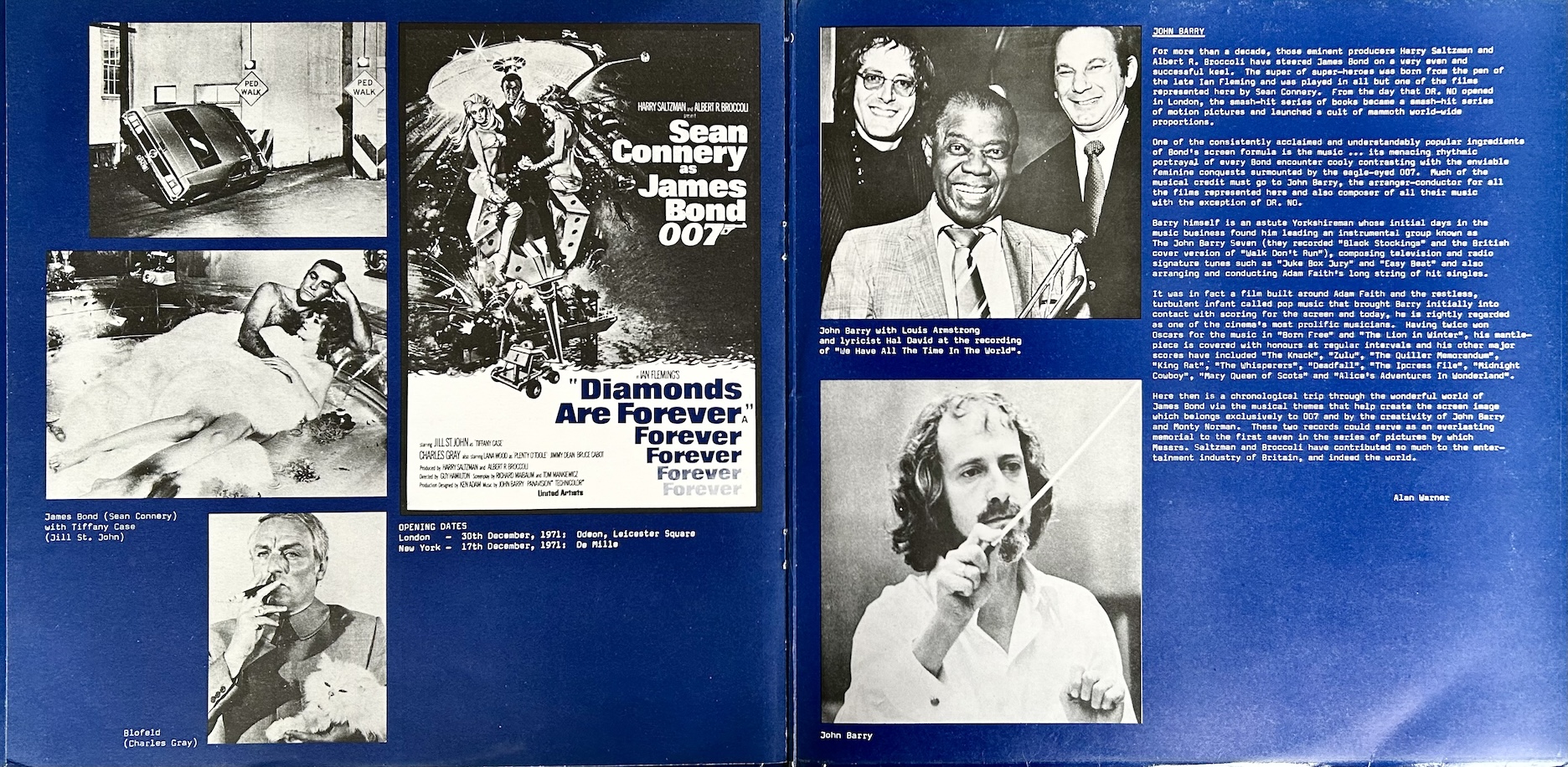
Well chosen excerpts from the first seven films were a perfect introduction to the music of Bond, and kick-started my lifelong obsession with this music. I’d recommend this set to any Bond enthusiast, though try and get the UK version: the pressing is better, and the US artwork is a pale shadow of the UK release, with no extra pages or photos inside. This is a great piece for the completist collector as well as the Bond initiate.
Over the years various other soundtrack compilations have appeared, usually focussing on the title songs. The important exception, mentioned earlier, is the double CD titled “The Best of James Bond - 30th Anniversary Collection”.
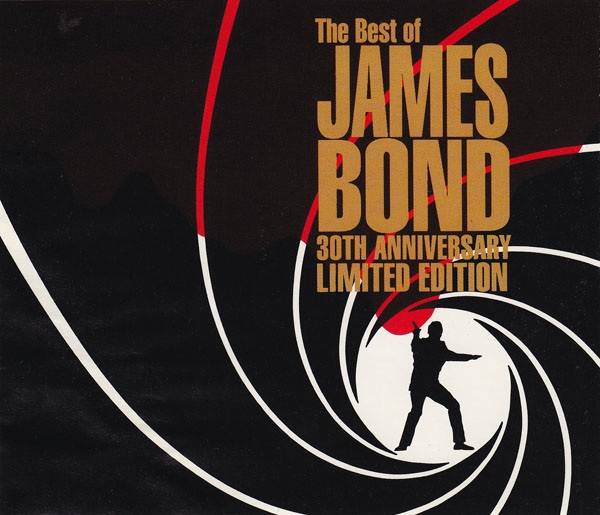
CD 1 (also released separately) has all the songs up to “License to Kill”, Timothy Dalton’s second and final Bond outing. But it’s the 2CD release collectors will want for all the rare goodies on that second CD, including those two versions of “Mr. Kiss Kiss Bang Bang”, extended, previously unreleased cues from Thunderball, plus other rarities and radio spots.
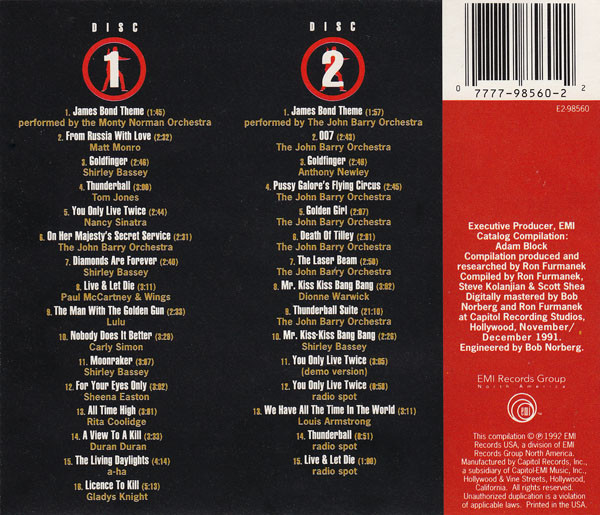
A few other single LP/CD compilations of the theme songs (including the non-Barry ones) continued to appear over subsequent years, culminating in the bumper collection on three LPs released in 2021 - “The Best of Bond… James Bond”. This goes right up to the present days, with Billie Eilish’s “No Time to Die” for Daniel Craig’s final entry in the series.
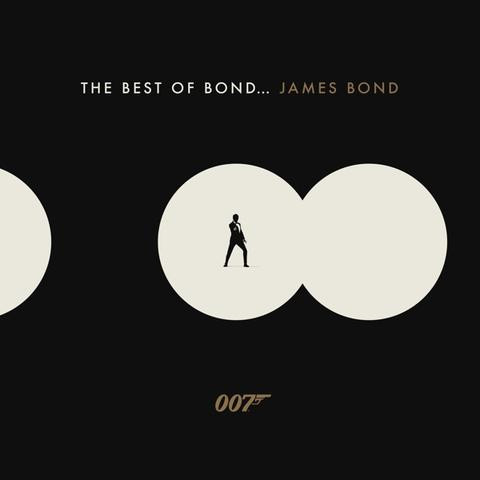
Throughout the span of his involvement with Bond (and beyond) Barry was releasing his own albums of re-recordings of Bond music, primarily for CBS. These are terrific albums, full of non-Bond music too, but alas it isn’t within the scope of these articles to cover these records. (They will be covered in the future, no doubt).
The one release I would avoid is “Moviola II: Action and Adventure”. The original “Moviola” release (which you can find on both CD and somewhat ticky vinyl) is superb, with rich engineering by the legendary Shawn Murphy, but on this second volume the Bond material emerges lethargic and inert.
I will, however, leave you with the cover for my personal favorite amongst Barry’s re-recordings, not least because it includes his matchless theme for the hit TV series The Persuaders starring Tony Curtis and Roger Moore.
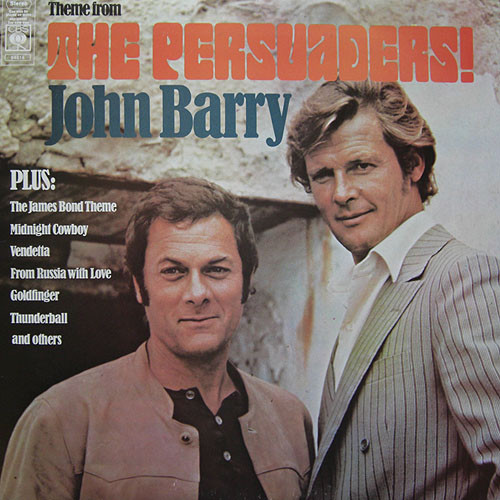
Having used the synthesizer so successfully on OHMSS, he was to use it again on several iconic TV themes, including this one...
...The Adventurer, and Orson Welles Great Mysteries.
Recently I came across this minty Japanese compilation, released in 1977 to coincide with The Spy Who Loved Me.
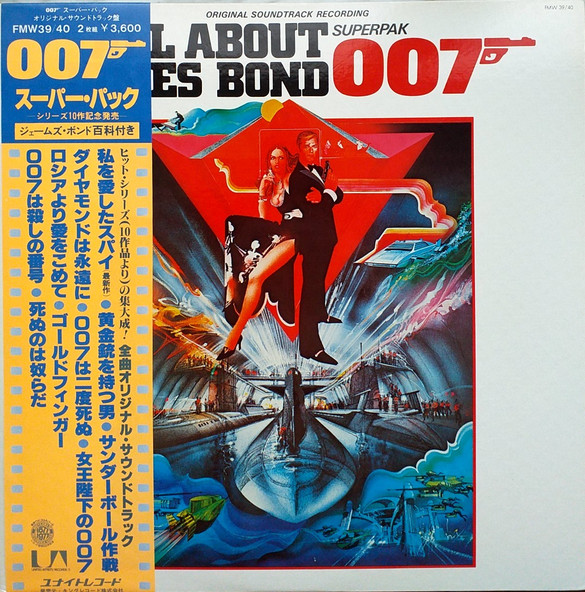
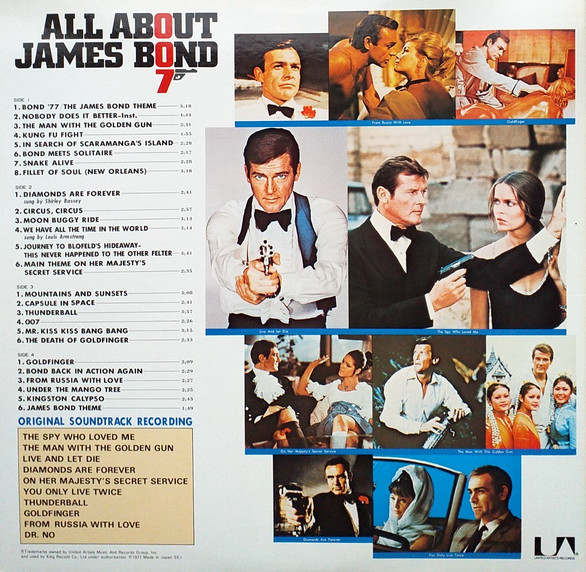
It includes an instrumental version of that film’s ravishing title song, “Nobody Does It Better”, plus Marvin Hamlisch’s surprisingly successful disco-infused take on the “James Bond Theme” - “Bond ’77”.
This is the expanded 12" version of "Bond '77"
After that you get two LPs of very well curated tracks from Barry’s scores, including a few lesser-known cues. Yes, you can clearly hear these are cut from copy tapes, but the pressing is immaculate, and it’s a great way to hear the music in a different order and context.
Finally, I have to mention the superb album of cover versions created by then Bond composer David Arnold in 1997 (which includes several of the non-Barry songs).
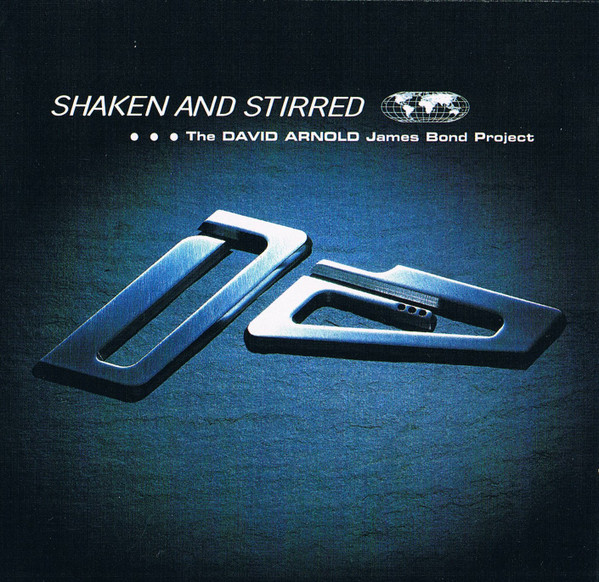
“Shaken and Stirred” is an imaginative album of varied singers and musicians tackling the songs in Arnold’s new arrangements, plus some more “extended” complete re-imaginings. I’ve already mentioned the Propellerheads cover of On Her Majesty’s Secret Service, which incorporates the Space March from You Only Live Twice. But let me also highlight the following tracks…
… let alone Iggy Pop’s world weary version of “We Have All the Time in the World”…
One thing is certain, while some of the Bond films may be showing signs of their age, the John Barry scores remain immortal and ageless. It is impossible to imagine the Bond series without them. Indeed, without Barry’s musical template, it is easy to speculate the series might not have achieved the longevity that it did.
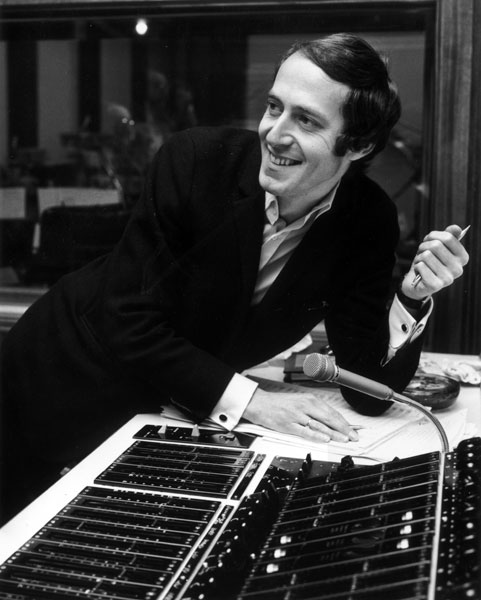
John Barry’s lifetime of extraordinary compositions encompasses so much more than just his work on the Bond pictures, but it is undoubtedly the work for which he remains most famous. In those early Connery pictures it was music utterly of its time - the swinging 60s - and helped define that era every bit as much as did the Beatles, the Rolling Stones, or the Beach Boys.
But whose records would I take with me to a desert island…?
No contest.
J. Barry every time.
Another martini anyone?
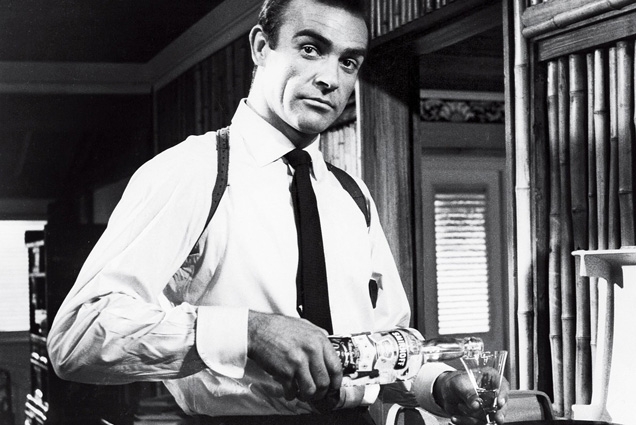
These articles are hugely indebted to two books. If you want to learn more about the music of James Bond and John Barry, these are your bibles.
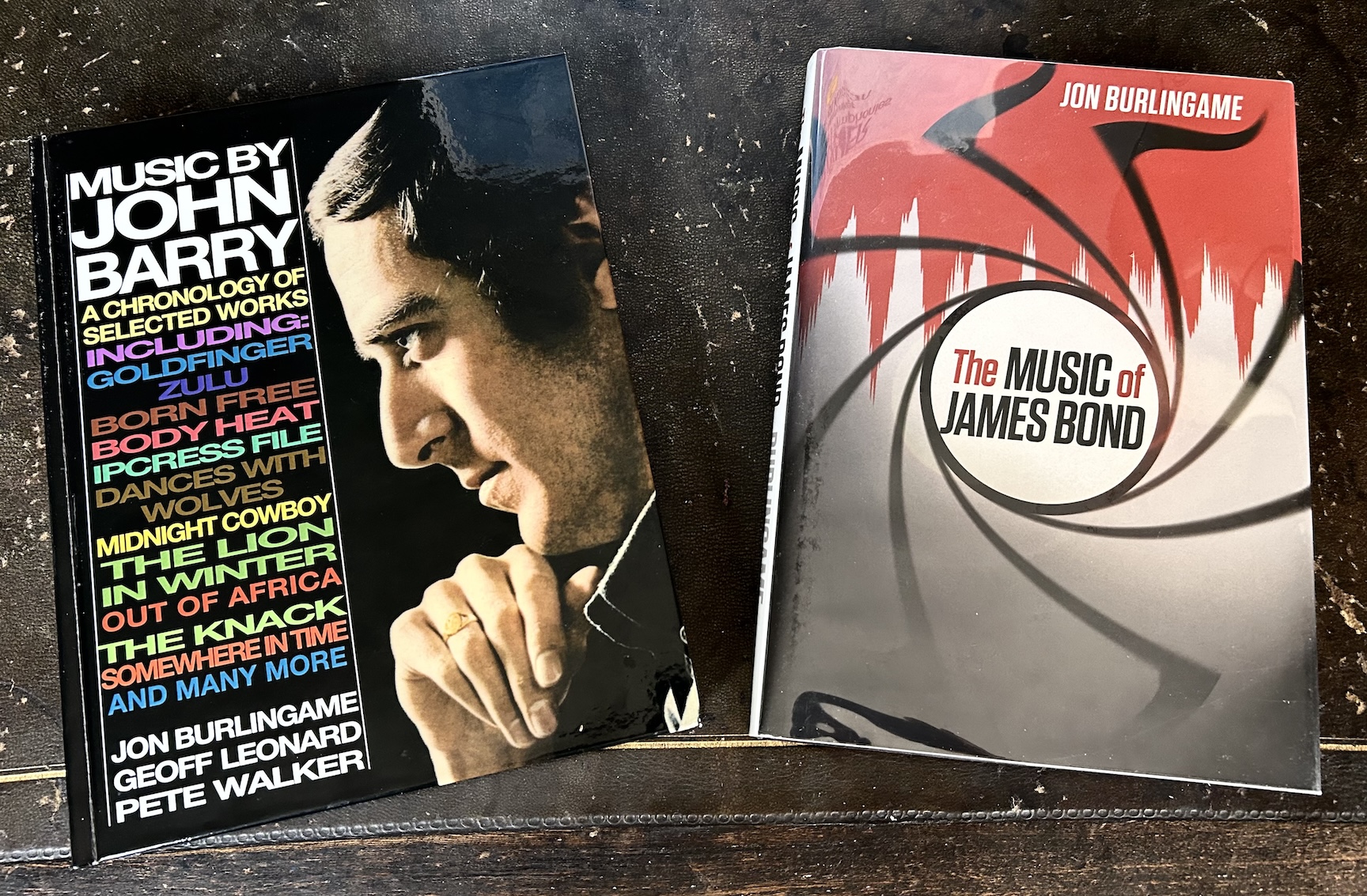
And if you haven't already, do check out my earlier articles about the Roland Shaw James Bond/Spy Music albums made for Decca Phase 4, true audiophile collectors' pieces. You can read Part 1 here, and Part 2 here.
